Ep. 27: Phoenix: Future / Dawn by Osamu Tezuka & Sensor by Junji Ito
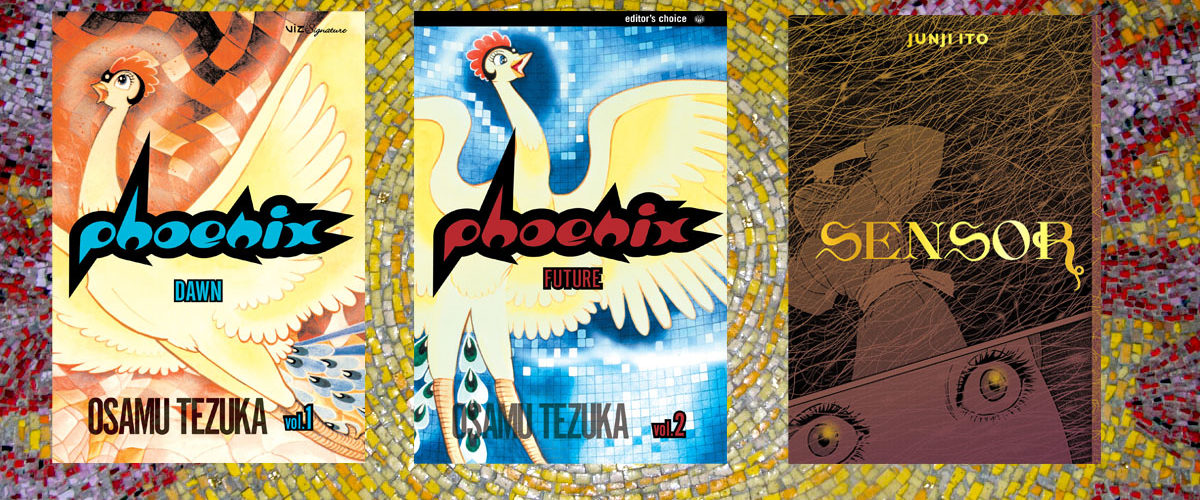
Welcome back to Mangasplaining for Season Two! This episode we read Osamu Tezuka’s classic Phoenix (despite Chip’s best efforts) and enjoy a bonus bit of #sponsored reading thanks to VIZ Media, who provided us with Junji Ito’s Sensor.
Powered by RedCircle
THIS EPISODE:
00:00 Welcome Back & Introductions
05:00 Phoenix: Dawn and Phoenix: Future, by Osamu Tezuka
1:04:00 Sensor, by Junji Ito
1:15:20 Reader Q&A: How do you pare down your manga collection?
1:28:00 Shout-outs! Darker than Blue, Kageki Shoujo, No.5, Best & Worst Manga 2021.
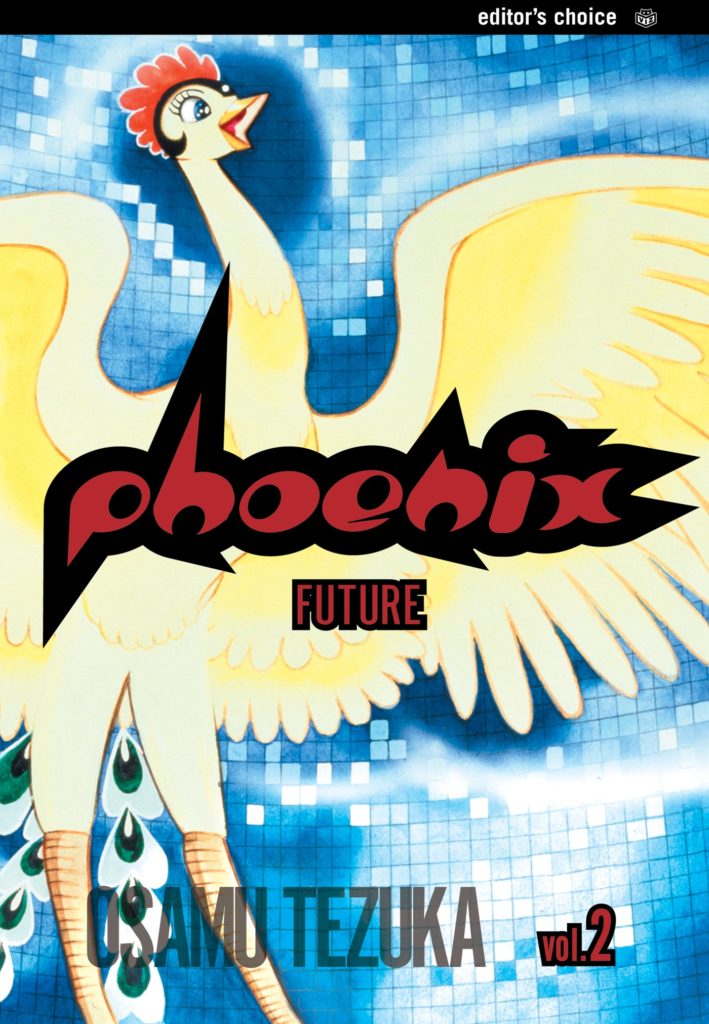
Phoenix: Future, and Phoenix: Dawn
By Osamu Tezuka
Published by VIZ Media (Digital Only)
Translated by Jared Cook, Shinji Sakamoto, and Frederik L. Schodt
Touch-up and Lettering by Susan Daigle-Leach
Edited by Alvin Lu and Ian Robertson
Show notes by Christopher Butcher, with editing and additional material by Deb Aoki.
Podcast audio edited by David Brothers.
Before we start…
We’d like to thank TezukaOsamu.net for being an incredible resource for researching the notes for this episode!
We’d also like to thank the folks at Tezuka in English for similar reference assistance. Such a great site!
Also, our sincere thanks to the folks at The Osamu Tezuka Facebook Page for their help in choosing this week’s book.
—
00:00: Welcome back! We’re very happy to be back on Mangasplaining!
Since we introduced the team, learn a little bit more about where you can find them by clicking the “ABOUT” above!
03:00 Chip was nominated, but did not win 3 Eisner Awards, which are North America’s most prestigious comics awards. Named for pioneering comics creator Will Eisner, there’s usually a few-dozen categories including the hilariously specific “Best U.S. Edition of International Material-Asia” which is “the manga award” but occasionally includes a title from Korea.
Our favourite book up for the “Asia” award was A Journal of My Father, by Jiro Taniguchi, which we covered on Season 1 Episode 22. It’s a great book, and was (in my humble opinion) far and away the strongest in the category. That’s the way awards go I guess…!
Finally, the Eisner that I jumped up on stage to grab (Hi, Christopher here) was creator Ken Niimura’s, which he won for “Best Digital Comic” for his webcomic Umami. He asked me to accept on his behalf though, because Ken lives in Tokyo and wasn’t going to be in San Diego anyway! Ken is a good friend and the author of Henshin (Image Comics) and Never Open It, and is the co-creator of I Kill Giants with writer Joe Kelly. Check out his work!
[Deb:] Yen Press is publishing Never Open It: The Taboo Trilogy by Ken Niimura on October 19, 2021. It’s his take on famous Japanese legends: Urashima Taro and the Crane Wife, and it’s well worth pre-ordering.
05:00 We’re getting right into the wacky antics this season as, yes, Chip absolutely read the wrong book. This isn’t a gag, it’s not a bit. He read Phoenix: Dawn (a.k.a. Volume 1), and the rest of us read Phoenix: Future (a.k.a. Volume 2). In his defense, we did throw him a curveball by assigning him Volume 2, and he has been very busy lately.
Since Phoenix was my pick (Hi, I’m Christopher) I should just say that I thought Phoenix: Future would be a much more approachable volume for Chip to ease into Tezuka’s work, and the Phoenix series overall. Instead, Chip ended up accidentally reading the much more dense and complicated (and IMO less-accomplished) Phoenix: Dawn, and I think I’ve ruined Tezuka for him forever. We’ll see, I guess.
Also, as mentioned, I just absolutely love the art in this volume. Tezuka’s sci-fi worlds are fantastic in the same way as Leiji Matsumoto, or maybe Jack Kirby. Check out this double-page spread.
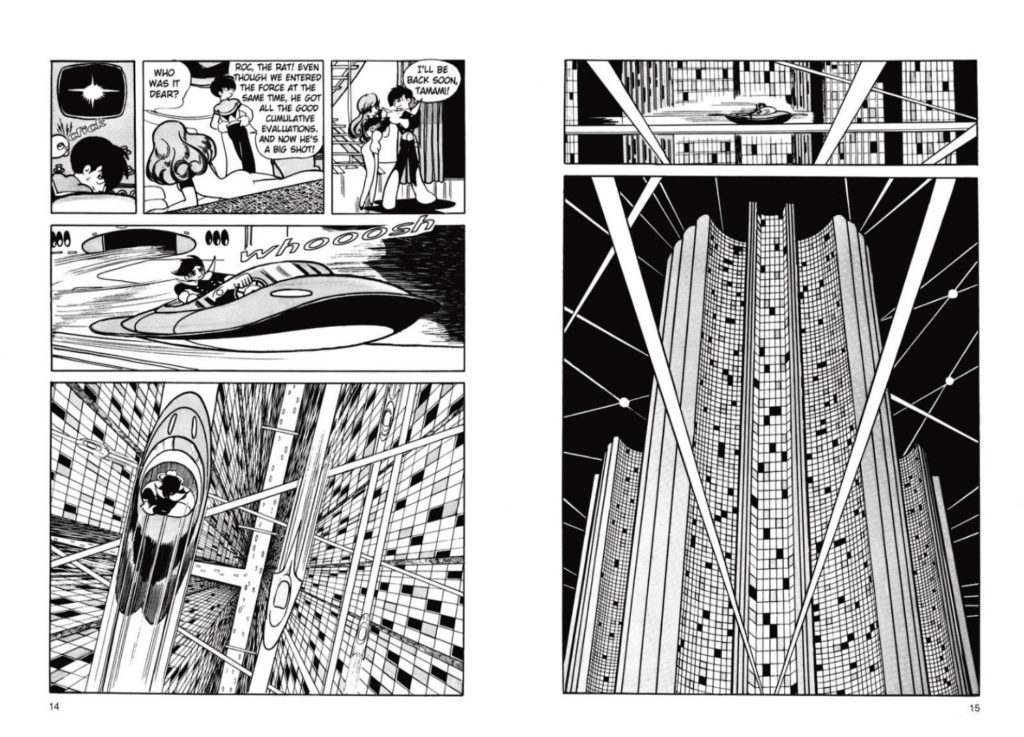
He also isn’t afraid to use emotion to deform or manipulate several of the illustrations. This page in particular is amazing.
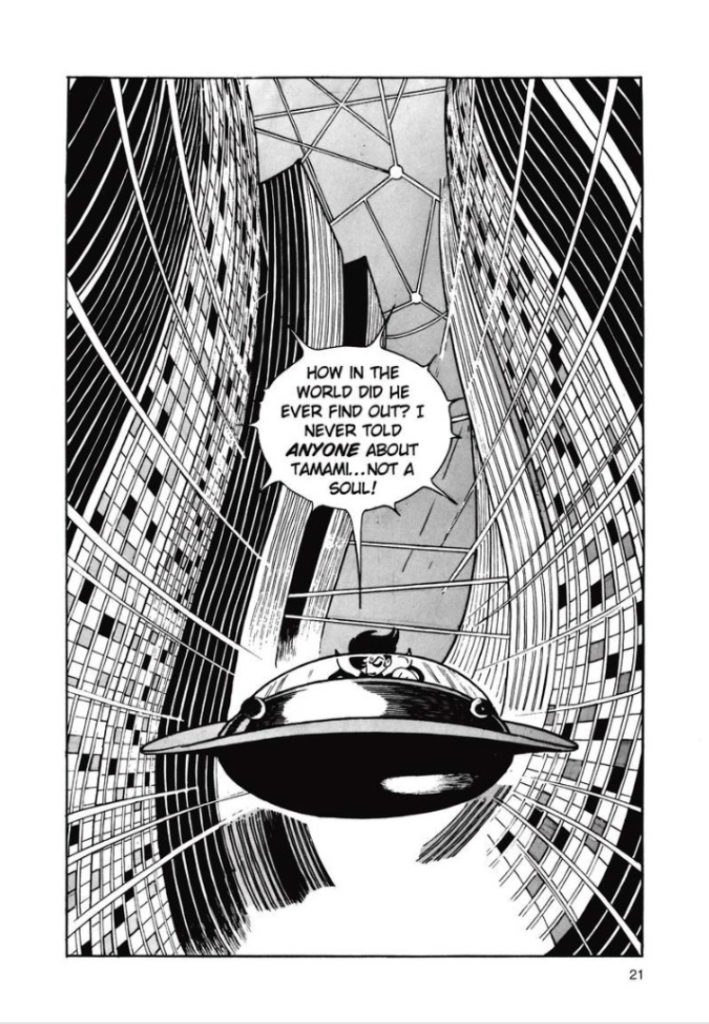
11:00 David’s got some really interesting insight here. In particular, many characters over the course of this volume will crumble to dust or fall apart, which mirrors a lot of what’s going on with civilization in this book.
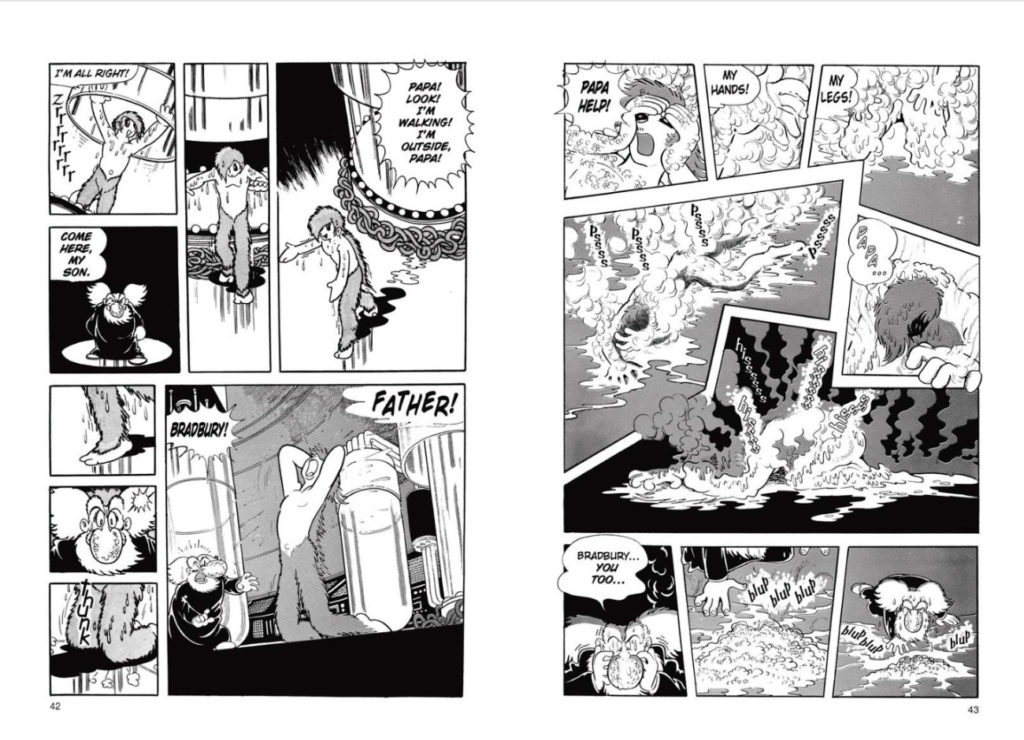
11:45 The Phoenix character appears very sparsely in this volume, and yes, when it speaks, its dialogue is shown in a completely different font than everyone else. I’ve never quite seen what the Japanese editions of Phoenix look like, and how this was handled in Japanese, but it is jarring in this book. I think it’s neat, but it did put David off and I think that’s really valid.
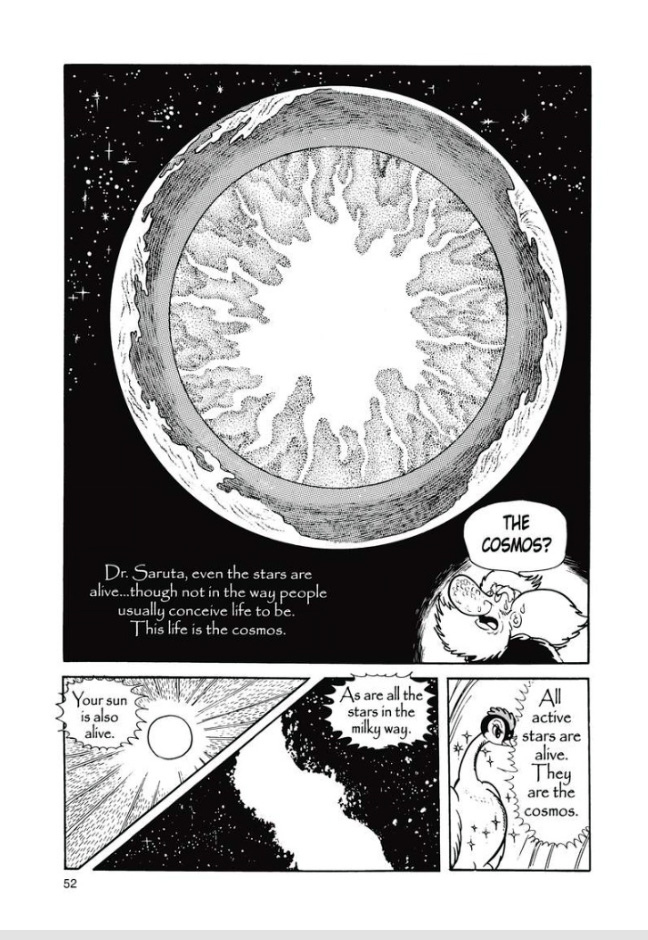
13:20 Tezuka, more than any other cartoonist I can think of, loved to include himself in his manga. We talk a little bit more about this later in the podcast, but right away, David mentions that Future features this little gag at the very beginning with a 30th generation offspring of Tezuka, riding the packed escalators after work.
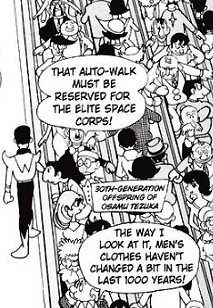
14:00 Okay, so we need to talk a little bit about Garo, COM, and rental manga. Please note this is deeply abridged.
Before the World War II, manga (illustrated comics) was a somewhat small industry and artform in Japan, with short comic strips, usually printed in newspapers and children’s magazines. These manga were influenced by Western comic strips and gag cartoons, but were also influenced by Japanese artistic traditions including illustrated scrolls like the “Chouju-Giga” which featured animals doing playful things as a kind of story created by images in sequence, ukiyo-e (woodblock) prints, and the traveling picture shows featuring illustration and performance called “kamishibai” (paper plays).
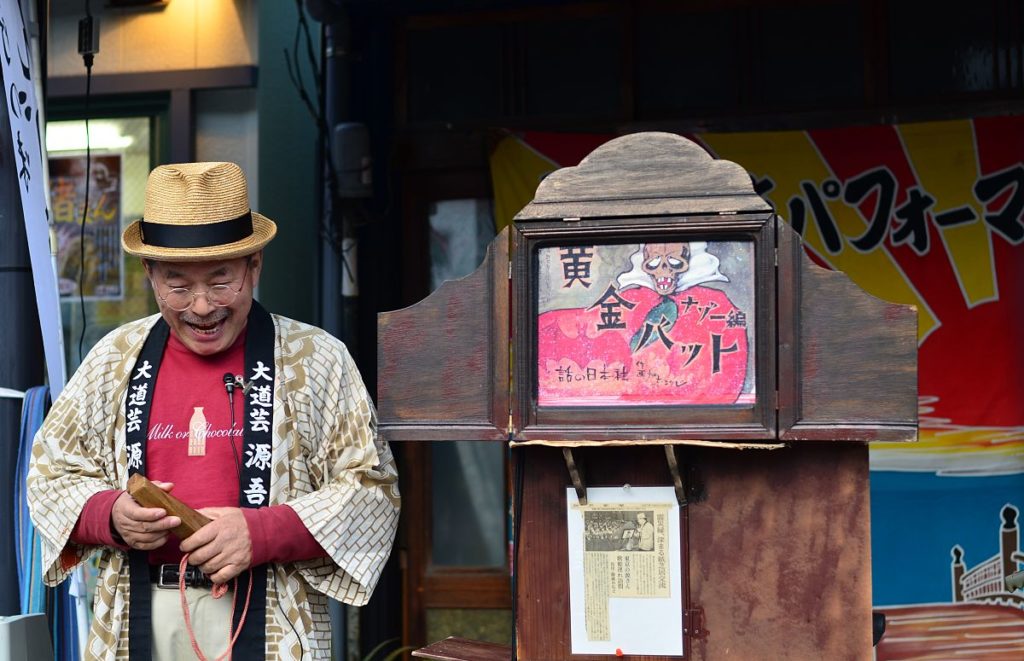
After the WWII, manga blossomed as a narrative art form and as an industry, as it was a relatively cheap and easy to distribute form of entertainment. Because kids (and grownups…) had little pocket money and there was still sometimes a scarcity of raw materials to print books and magazines, the most popular form of manga was generally ‘rental manga’, or books that would be printed in limited numbers, and would only be available to read for a small fee from manga rental shops. These manga were called kashihon, and the shops or cafes or kashihon-ya.
At the time, publishers of these titles were generally centered around the Kansai / Osaka area. These rental manga publications were often original, book-length works by young manga artists looking to tell unique new stories, though often deeply influenced by their favourite media like movies. Because these books needed to be read and re-read by many people, many kashihon were published as hardcover books.
Side-note: It’s wild that in 1947 Japan was publishing lots and lots of original hardcover graphic novels. I mean, some of these books were actually anthologies and short story collections, but yeah. Bunches of original hardcover graphic novels in the 1940s and 1950s.
Osamu Tezuka (look, we’re almost back on track here…) had done a few short comic strips for the magazines for kiddos mentioned before, that restarted after the war. His big breakthough was with one of these book-length works for the rental manga market. Called “Shin-Takarajima” or “New Treasure Island”, it was published in 1947, based on a short-story by Sakai Shichima, and deeply inspired by Robert Louis Stevenson’s 1883 novel Treasure Island. It ended up going beyond the rental market, way beyond, selling more than 400,000 copies. It, alongside the insanely popular women’s comic strip Sazae-san, started the manga craze in the late 1940s!
A little bit later, we talk about how the original version of Tezuka’s New Treasure Island was actually lost. Essentially Tezuka drew it, the author Shichima cut out 60(!) pages, and that was the original version. When it came time to reprint this book in the 1960s, Tezuka tried to restore those missing pages from memory, and changed a number of other pages of the book. For decades, that edited edition was the only version available. As mentioned later, in the 2010s, the original version of this book was reprinted in a deluxe slipcase for like $20.
Of course, I bought one. (See above)
Anyway, this manga craze got crazier, and the children’s magazine publishers kept getting requests for more and more manga in their kids magazines. The first manga-only magazines (or mostly-manga magazines) for kids were published not long after, with the first, Manga Shonen, launching in 1948. Tezuka continued to make more and more book-length works following the success of New Treasure Island (the ones in English include Lost World, The Mysterious Underground Men, Metropolis, and Next World – some of which were published in English by Dark Horse), but he was very interested in breaking into the big new Tokyo manga magazines. He did just that in 1950 with Dr. Tiger’s Strange Journey, and then the smash hit Jungle Emperor Leo (inspiration for The Lion King). Then he launched Astro Boy in 1952 and things were like… set. He was Tezuka as we know him.
Now if you want to read more about this next part, I recommend A Drifting Life, by Yoshihiro Tatsumi, published by Drawn & Quarterly, or The Osamu Tezuka Story by Toshio Ban (Stonebridge Press), which is basically a manga biography of Tezuka by one of his former assistants.
Baaaaasically, the kids manga magazines got super popular, and the average Japanese citizen became more prosperous as time went on, and so there was less of a need for rental manga, since people could afford to buy their own copies of manga books or magazines.
Artists that were selling their work to the kashihon publishers were getting paid peanuts because that whole segment of the industry was ending. This allowed artists the freedom to experiment a hell of a lot more with their art and storytelling, and as a result, this helped push the boundaries of manga into the realm of more mature, adult stories (again, largely inspired by film, which was starting to become more available in Japan.)
So you had creators like Yoshihiro Tatsumi making crime stories, western stories, romance stories, basically adult genre fiction for the kashihon market. But over time, Tatsumi (and others) pushed away from genre altogether, to tell more realistic stories for adults, which he called “gekiga” (dramatic pictures). This is in the late 1950s, like 1957 to 1958. Some of these books were moderately successful, which helped a lot of the Osaka-based publishers transition out of rental manga into mainstream publishing. So now you’ve got this alternative style of ‘grown-up’ comics — not nearly as popular as the boys’ and girls’ manga dominating sales charts, but viable.
Then in 1964, in the midst of the “postwar economic miracle” in Japan, there were also a lot of Japanese people who felt very left out of the prosperity of this new era. This unrest spawned a generation of college students who rebelled against the government and authority figures in general. In the midst of this, a gentleman named Katsuchi Nagai starts an experimental magazine, Garo, with Sanpei Shirato’s Kamui as the centrepiece. Garo featured stories that were simultaneously contemporary and nostalgic, populist and confoundingly artistic. It was a vehicle for people to tell personal or important stories that wouldn’t otherwise be published by more mainstream publishing companies.
Some of it was experimental art-manga. Some authors called their work gekiga. Garo was very different from the ‘mainstream’ manga magazines of its time. It was ‘cool’ among young people, and it made the work of Tezuka and other manga stalwarts look very, very young and uncool in comparison. It was sort of like when Marvel burst onto the scene in 1963 and revealed that DC was actually just Dad Comics, and all the hep cats “made theirs Marvel.”
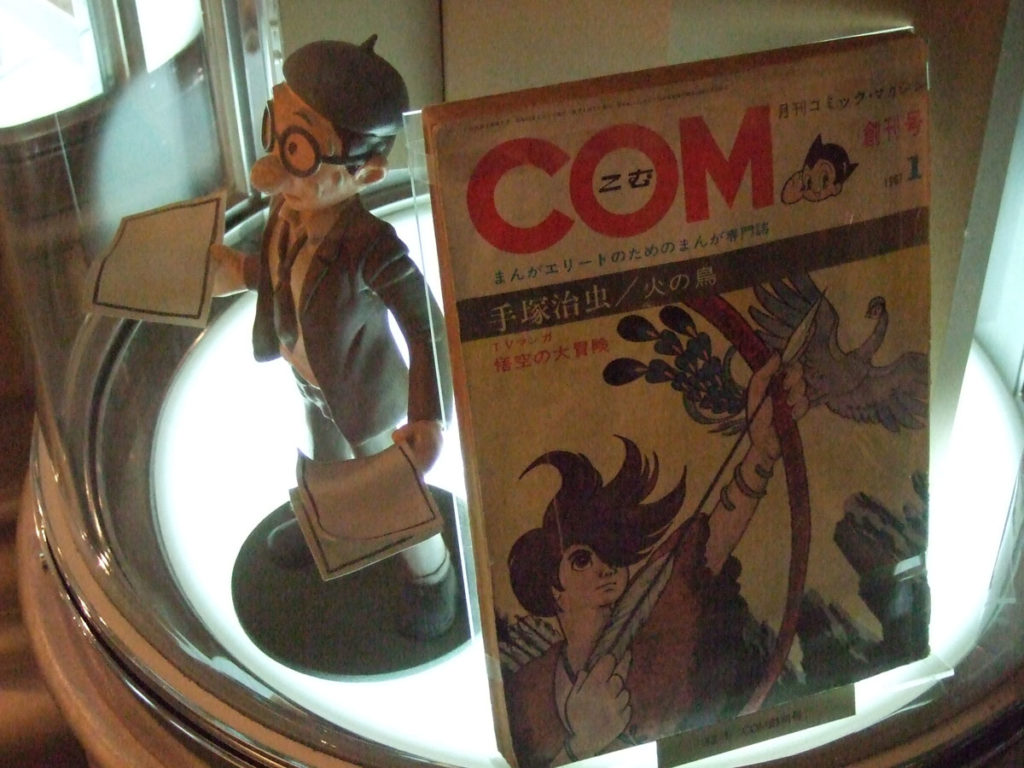
So, yeah. Tezuka, who’s having kind of a rough time at this point anyway due to some animation industry stuff, taps into his competitive streak to launch his own ‘alternative’ manga or gekiga magazine called COM, in roman letters in 1967. And his first series in this new magazine? His final version of the Phoenix story, which would eventually come to be published as Phoenix: Dawn, which Chip read by accident.
Okay, so that’s a ‘brief’ summary of a selected slice of manga publishing history from 1945-1967. I pray I didn’t get too much wrong.
P.S. For a really interesting timeline graph of Tezuka’s publishing history, check out this Chronology from TezukaOsamu.net.
https://tezukaosamu.net/en/manga/chronology.html
19:30 It’s interesting that Chip mentions that Phoenix: Dawn felt like Tezuka-sensei was making it up as he was going along, because I think honestly he was. Tezuka was a prolific creator, but also had a lot on his plate at any given time as a result. We’re talking about a guy who could pump out 300+ pages of manga a month for several series at a time. That said, at least story-wise, it’s amazing to me how much more ‘put together’ later volumes of Phoenix feel compared to Dawn. I do think his art also changes a lot as his mature works like Ode to Kirihito or Ayako demonstrates, and I look forward to reading more and seeing how our thoughts on Tezuka’s work change as they go.
But yeah, that problem with hands that Chip talks about is real. Tezuka was just… maybe not that concerned… with that sort of anatomic fidelity.
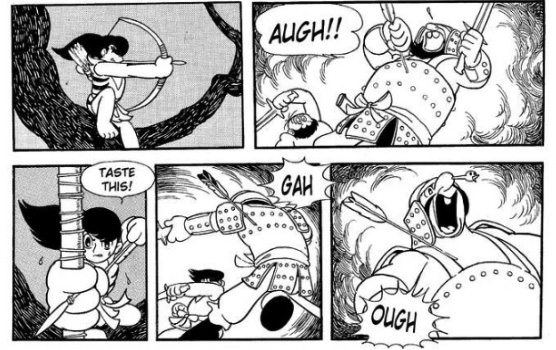
20:00 We do talk about this a little more as the episode goes on, but yeah, the tone of Phoenix: Dawn is ALL OVER THE PLACE. Trying to show that things were tough in the past versus slapstick humour. The tone is a lot more consistent in Phoenix: Future… which is why I Suggested That One. Haha. But yeah, there’s some real sensitive material in Dawn that can come as a shock.
24:05 Tezuka’s formalist experimentation within the comics form is one of the things I like best about his work. David mentions this incredible bit from Phoenix: Dawn, page 159, with characters interacting with the panel borders.
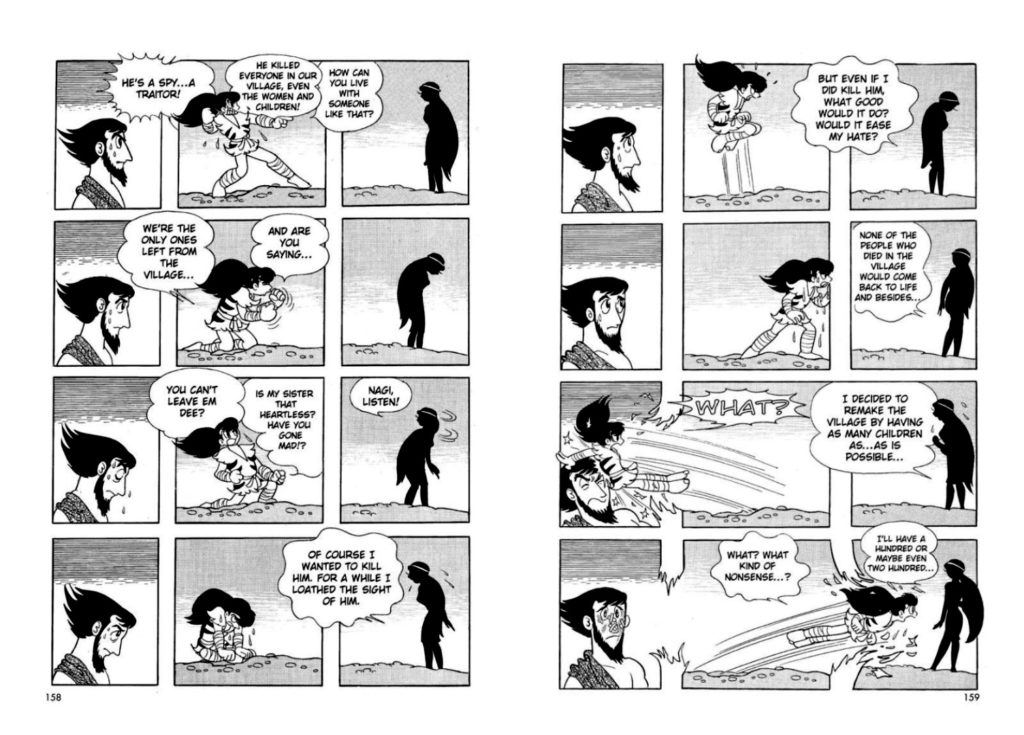
This sort of experimentation is present in the other Phoenix volumes, but probably nowhere moreso than in Space, which is a short included in Phoenix volume 3.
24:10 Gonna sell out David a little bit here, but he’s a big fan of the recent relaunch of Osomatsu-san/-kun. Based on the original gag manga by Fujio Akatsuka which ran in Shonen Sunday from 1962-1969, it’s a gag manga about sextuplet brothers making mischief. The other character doing the weird pose (Iyami) on the top right of this spread is also from that series:
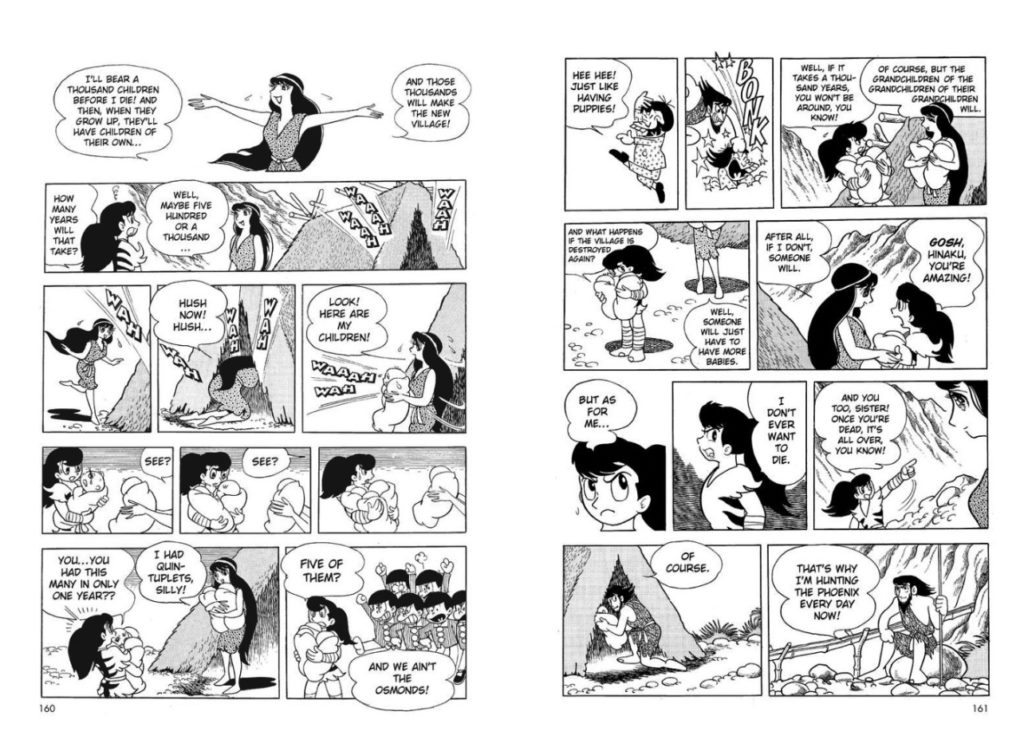
I think this is a great example of the power of localization, as these characters are household names in Japan, but nearly unknown in the west. The Osmonds are famous for being a giant family of entertainers, so it’s a pretty good localization/translation of a very weird joke in the middle of a fraught and tense scene.
Meanwhile, here’s John Lennon doing that same “Sheeeeh!” pose from the right page while he was in Japan.
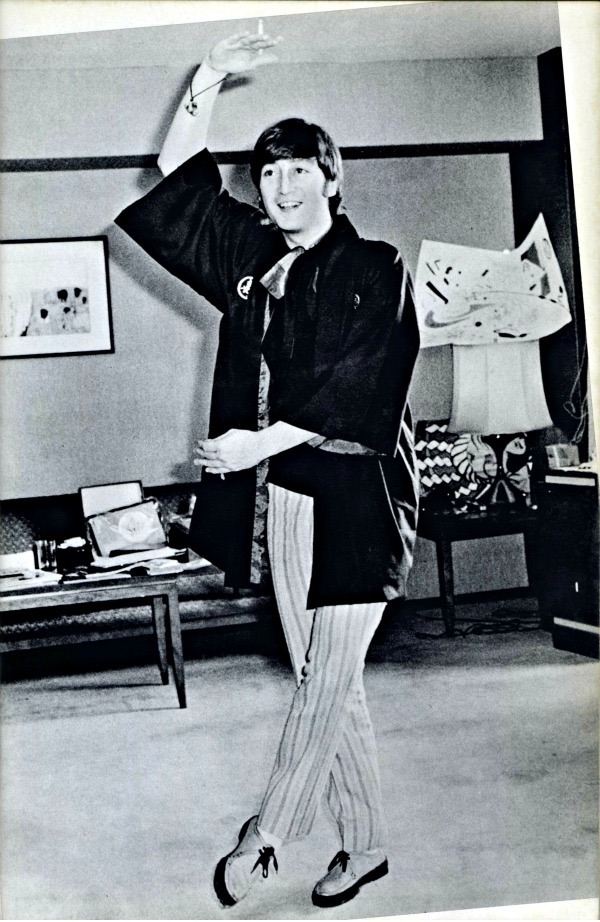
25:45 What Deb is talking about here is like, a visual representation (a horse getting sliced like Gumby’s horse (Pokey)) of the things Chip had a problem with–It’s really intense and heavy material, treated cartoonishly.
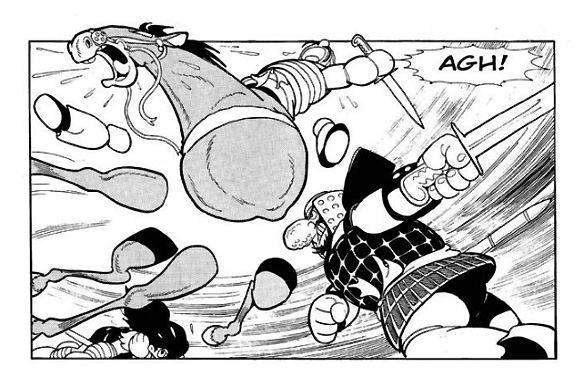
Then I jump into page 210-211, and you see that Tezuka is drawing this double page spread to show ultraviolence but trying to NOT show it as… gross… as it could be. In this way, he’s not doing “cutting up Gumby” like in the last example, he’s trying something much more ambitious. It’s interesting that this comes earlier in the story, because I think it’s much more successful than the previous example of disassembling a horse into parts.
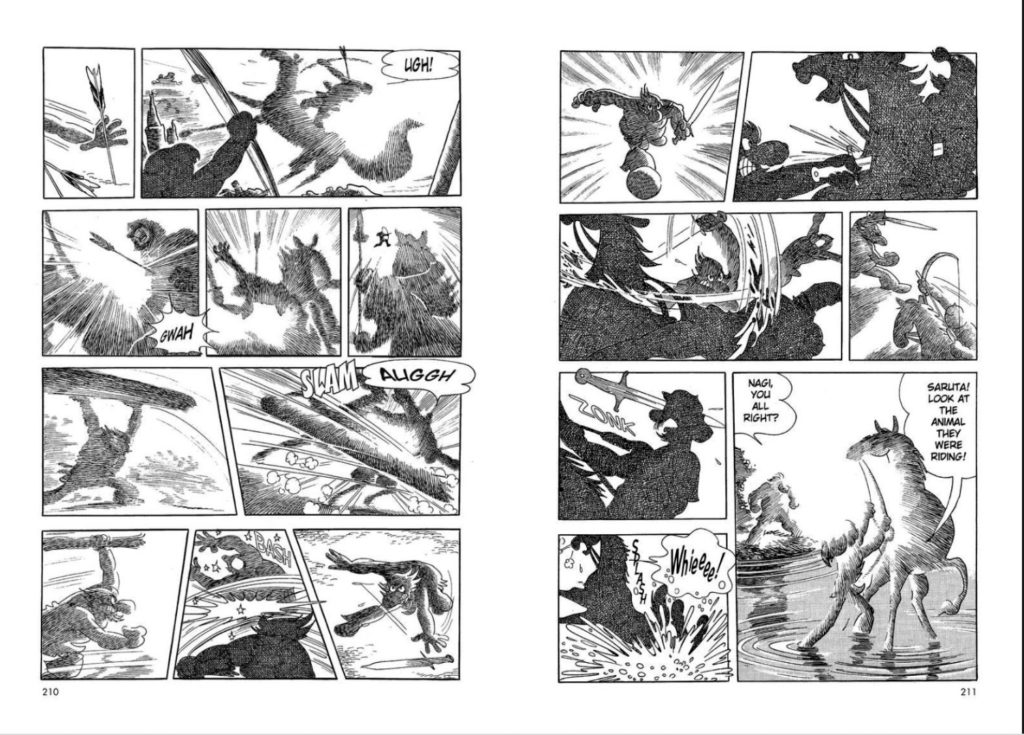
Page 131: It looks like we were referencing two different “ships on the black sea” moments in Dawn. I thought this sequence and its use of blacks was incredibly powerful.
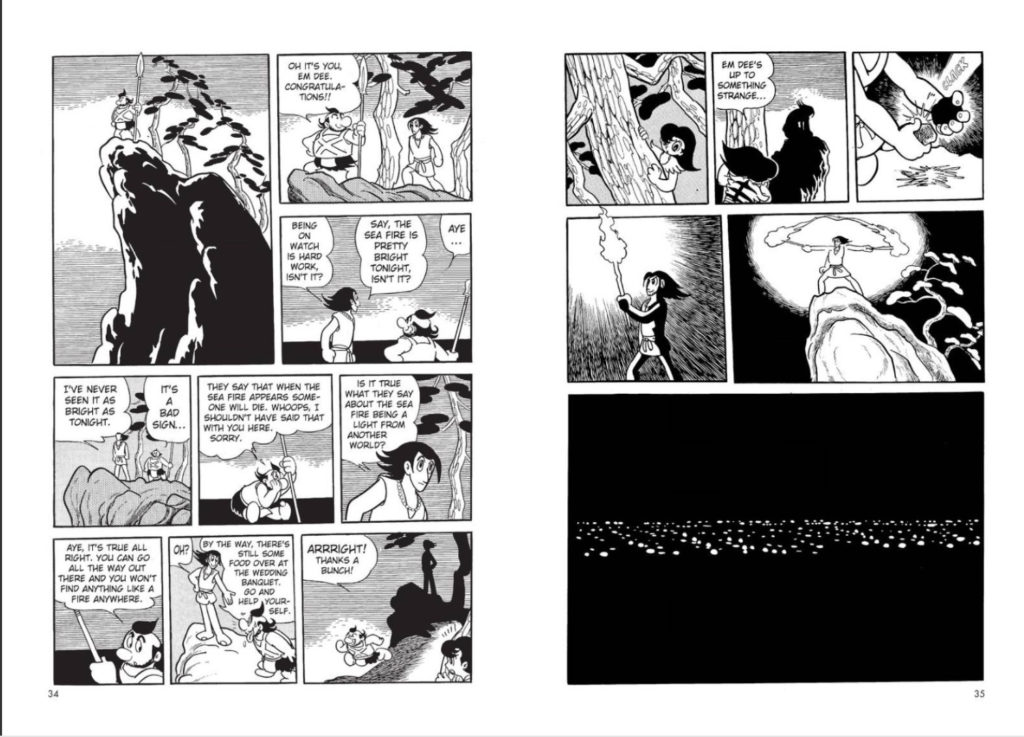
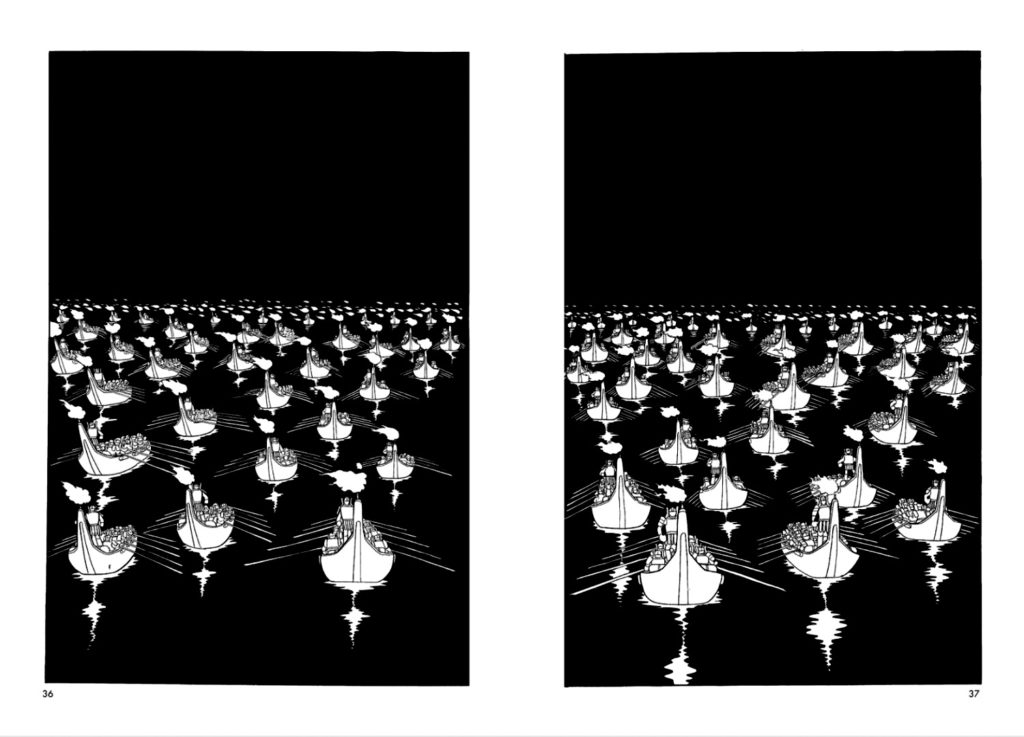
But Deb was actually referring to this page here, which is really beautifully balanced (and even more detailed).
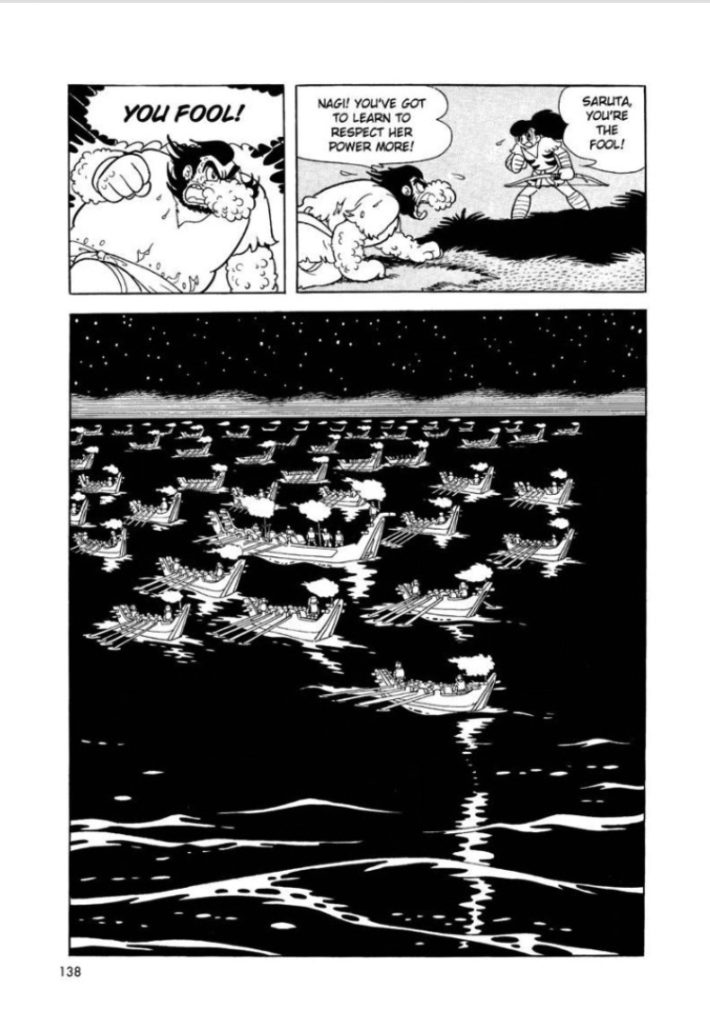
28:00 I was really, really taken with Tezuka’s sci-fi pages, it changed the way I looked at comics honestly. The futuristic pages of Future (lol) are just gorgeous, and made me seek out the work of Keiko Takemiya (To Terra/Toward the Terra – published by Vertical and now sadly out of print, but available online from Manga Planet – https://read.mangaplanet.com/comic/5dca475d21fd8) and Leiji Matsumoto (Galaxy Express 999) to see what these folks would do with the form. Check out these Tezuka pages though:
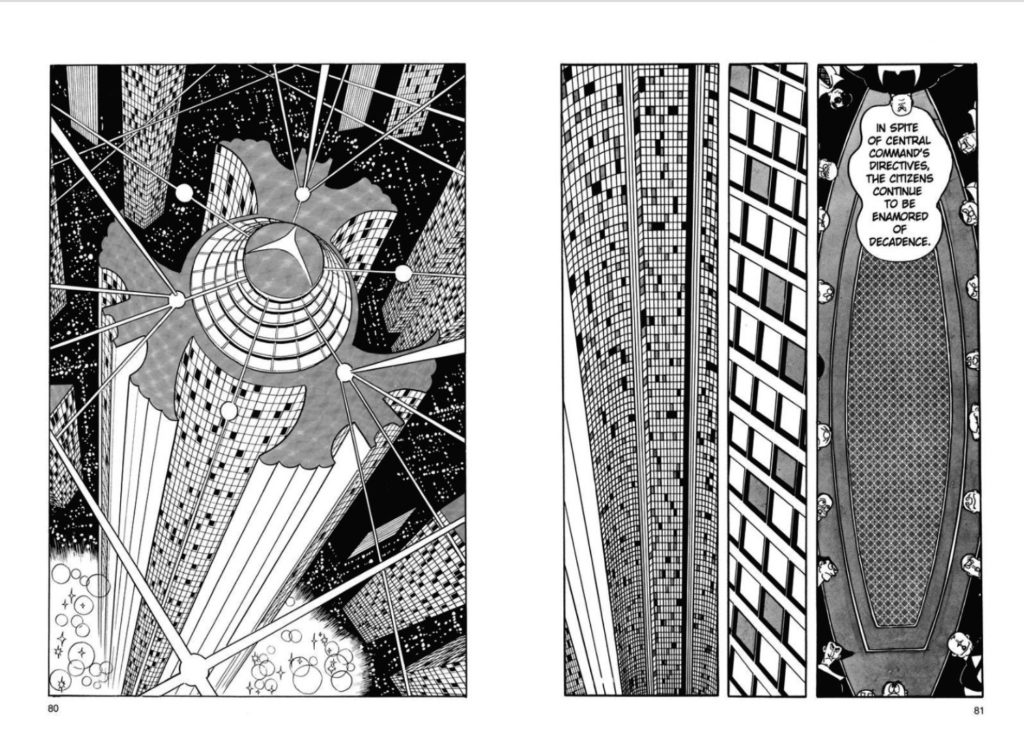
30:00 Here’s that talk-around-the-table we’re discussing, from Future pages 82-83. I meant to say “worm’s-eye view.” It really is a trippy design choice.
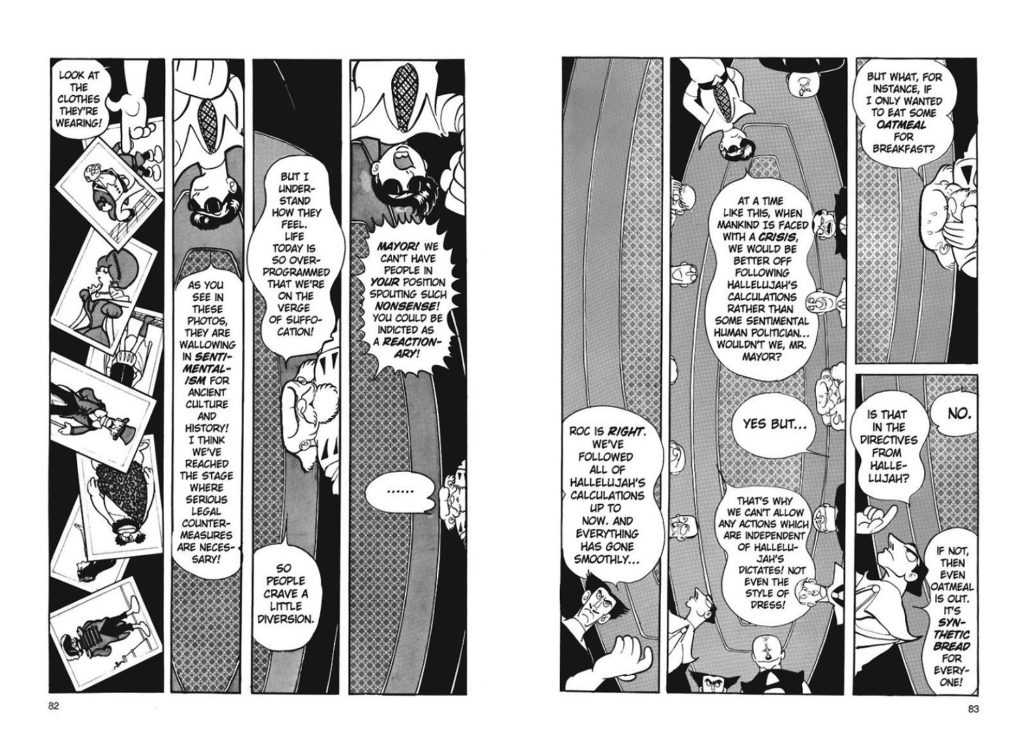
32:10 Look, I can’t confirm it, but look at the design of this page and tell me he didn’t design the escape rocket ship AFTER he designed the page and wanted a bunch of really strong lines. 🙂
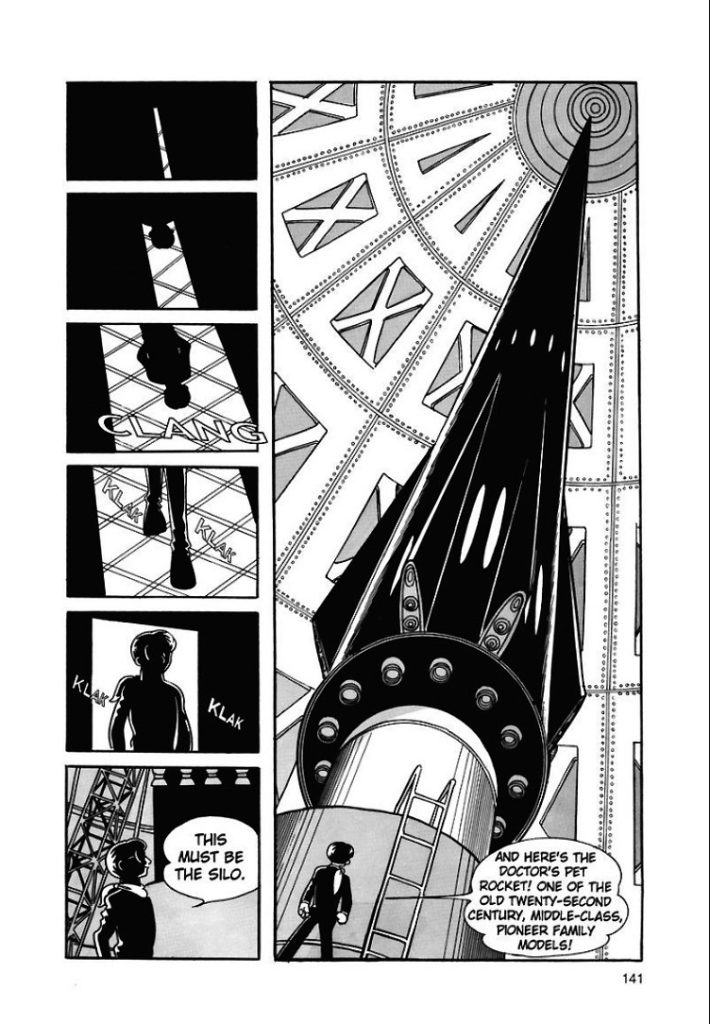
33:00 Christopher mentions Takehiko Inoue, author of Slam Dunk, REAL, and Vagabond. He’s well-known for having some of the best artwork in manga, and is pretty experimental within the confines of monthly manga publishing as well. He’s a fantastic creator, and I can’t wait for us to cover one of his manga on the podcast. There’s so much to talk about. For example, here’s his commercial for the massive fashion and cosmetic brand Shiseido:.
34:00 As Deb mentions, in Phoenix Volume 2: Dawn, Tezuka does actually include the same sequence of the hunter capturing the Phoenix, but redrawn. He’s working hard in these sequences to connect these two books, and every other Phoenix that would come. I mean, he literally ends all of time in volume 2…
The sequence from Phoenix Volume 1:
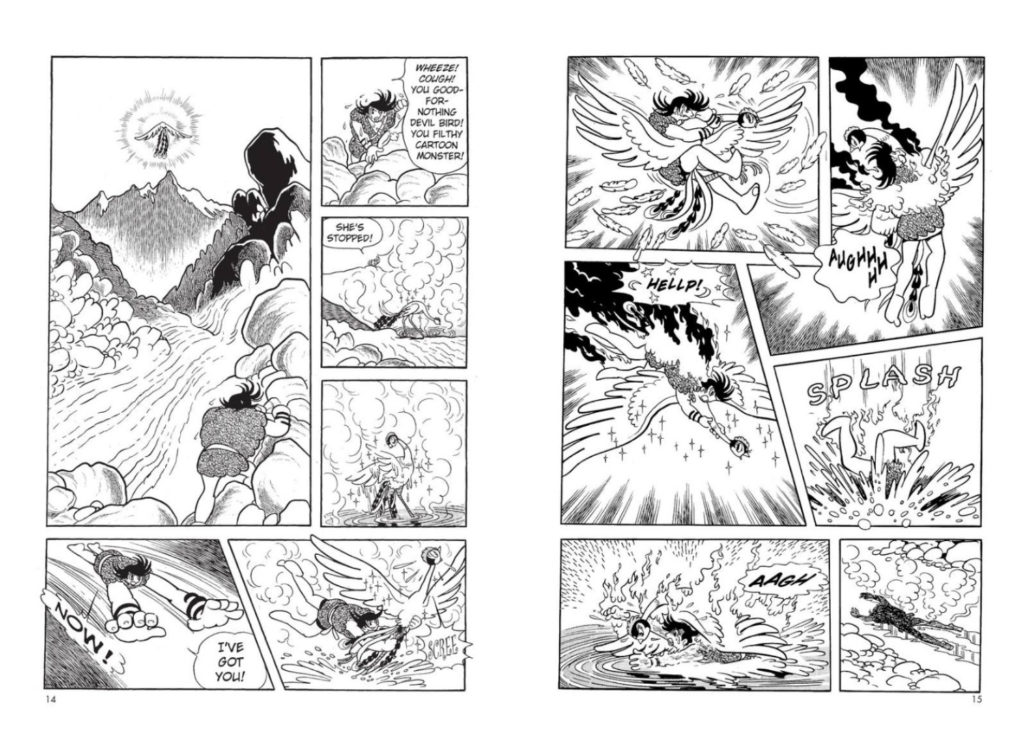
The sequence from Phoenix Volume 2:
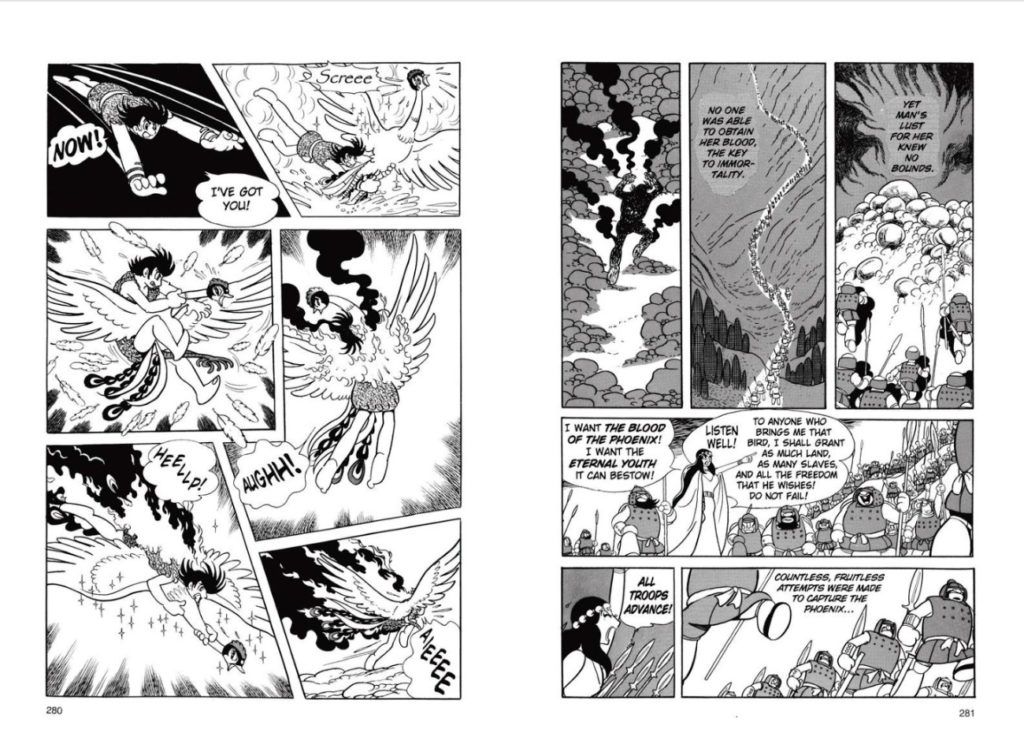
34:50 I think it’s smart that VIZ included a ‘map’ of the Phoenix series in every volume, to show how the stories connected to one another.
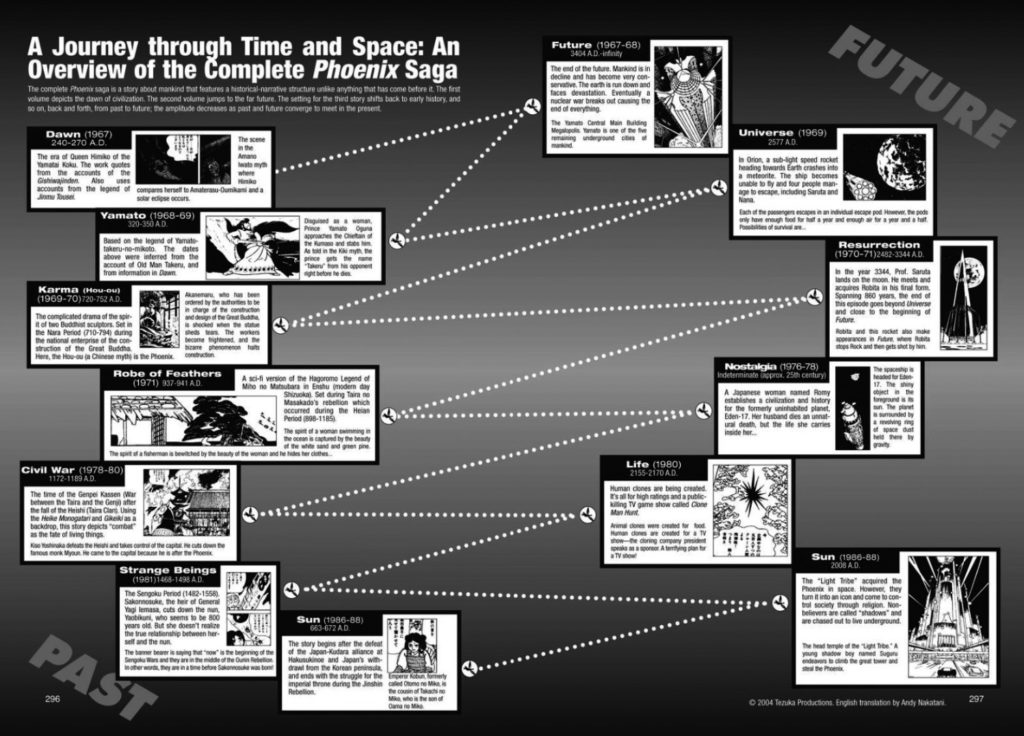
37:45 I hope we will read it again one day.
38:00 There’s SO MUCH bonus material in Phoenix: Future that also makes it an amazing introduction to the whole series, including (even) a note from Tezuka himself. I’m still not entirely convinced that Phoenix: Future is the best stand-alone Phoenix (I think Space or Karma might be), but I think Future is easily the best published volume to start with, especially for newcomers, especially if you’re the kind of person who likes to read all of the bonus material.
41:45 Luckily I covered this up top…! Haha. That took 2 hours to write.
43:00 David references the wolf gags from Dawn.
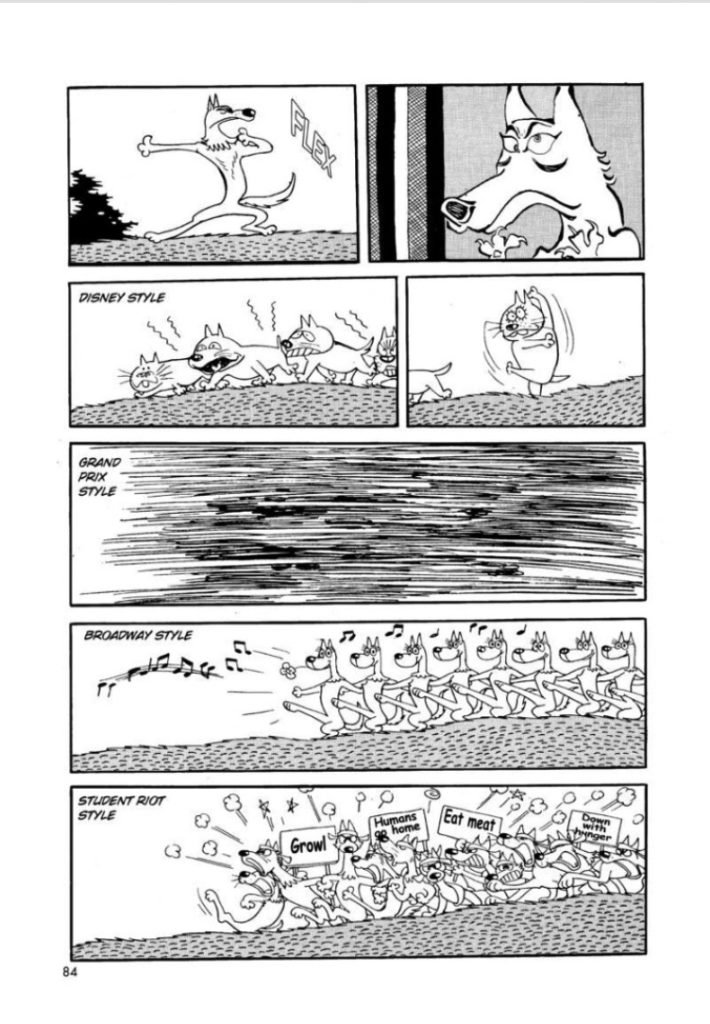
44:00 What I was getting at here was that traditional hand lettering, flipped pages, etc., make it difficult to reprint occasionally, as the book will need to be re-lettered and edited with translated sound effects from scratch. While some works have started to see these major re-releases (Rumiko Takahashi’s Mermaid Saga is one we’ve already read that’s had those changes made), it’s an expensive process and it’s a good example of why these books might be out of print now.
46:30 As David explains, Tezuka’s ‘Star System’ was basically Tezuka creating characters that he thought of as “actors” He would reuse those same actors as different characters throughout his work. Sometimes they’d ‘play their type’ and other times they’d surprise readers by playing ‘against type.’ For a more detailed explanation, head over to TezukaOsamu.net.

Meanwhile, Deb’s Christopher Guest movies explanation is both wild and absolutely on-point.
49:20 So I covered the Early Works stuff pretty well on the podcast, and I feel bad that I was kinda mean to VIZ’s edition of volume 12 because they did their best, but man, those original Japanese prestige hardcovers are just so beautiful, omg.
Also it looks like my Japanese edition has extra stories not in the VIZ edition? Man. Man.
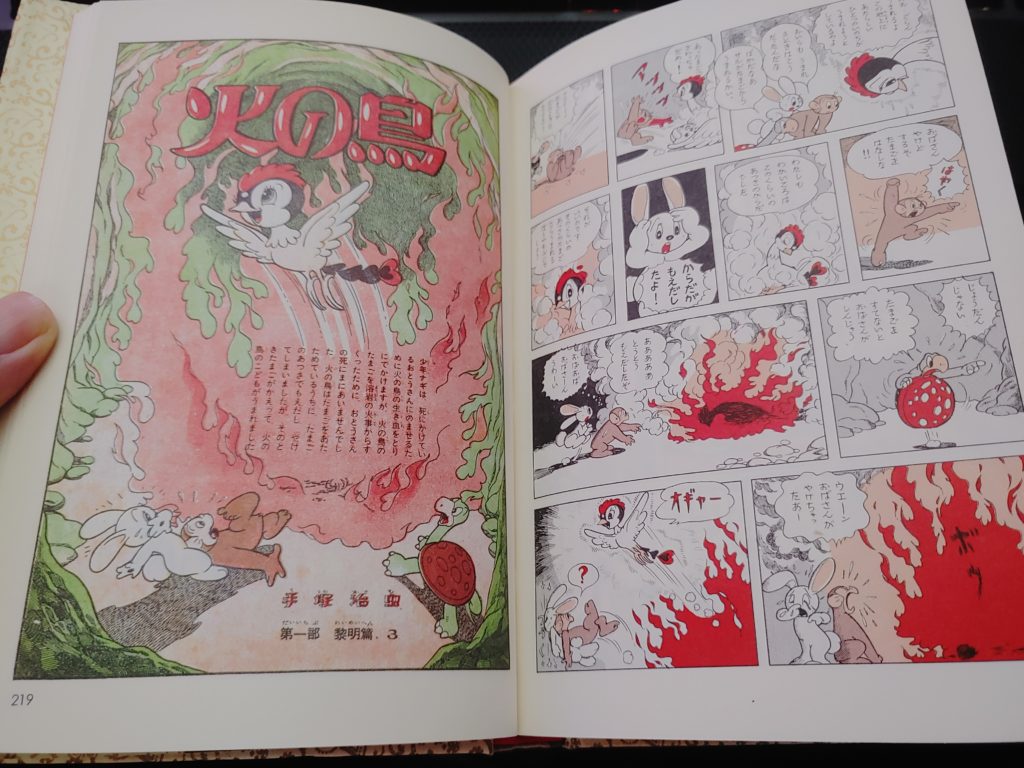
51:50 Here we talk about our friend Ray Fawkes’ book One Soul, published by Oni Press. If you’re reading this because you’re already a fan of Tezuka’s work and have read Phoenix: Space, we can highly recommend One Soul. It’s a book that follows 18 people through their lives, one panel at a time, somewhat similar to how the last half of Space is set up. A fascinating comics formalist experiment (and really good, too!). Check it out.
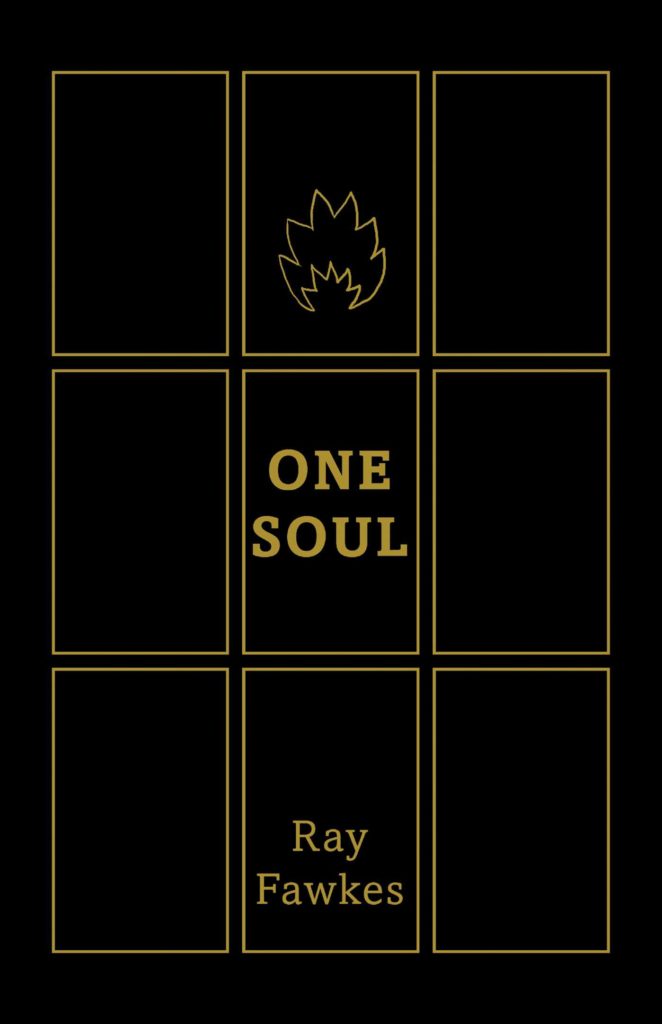
And frankly, tracking who and what influenced Tezuka and who and what Tezuka influenced could honestly be several books. Heh.
55:44 Maybe THIS is heresy, but yeah, early Sanpei Shirato is like… you’d be forgiven for thinking this was a Tezuka work. This just isn’t that far off what’s going on in Phoenix Volume 1.
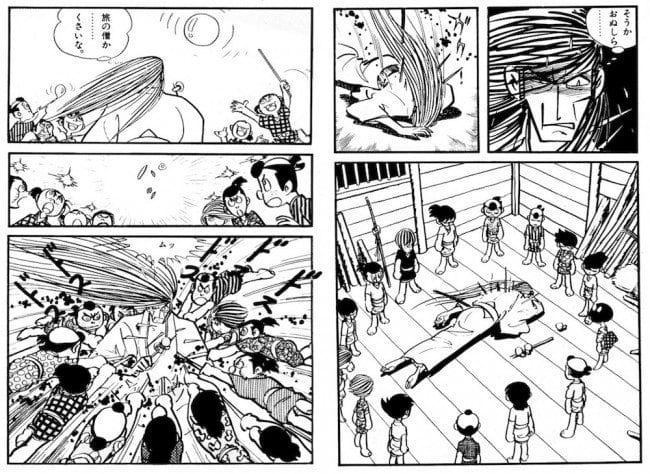
Stolen from a Ryan Holmberg essay on Garo magazine that ran in TCJ.
1:00:00 The end of that anecdote is that those Gasoline Alley volumes (Walt & Skeezix) feature a LOT of fan submissions, from collectors of the strip (both original artworks and printed newspaper strips), and those have enabled those collections to even exist. They’re monumental undertakings. Most classic comic strip reprints of work from that era are massive undertakings that rely on the work of amateur archivists. This sort of problem is still going on today, particularly with works that only existed digitally.
1:01:00 So the weird patchy pig is Hyotan-tsugi, and occasionally Tezuka will use it as a stand-in for himself or other characters, or will otherwise appear in different Tezuka stories. You can read more here: https://tezukainenglish.com/wp/?page_id=1097

Meanwhile, here’s an example of what I was talking about, about Tezuka constantly reworking his own manga. Here you can see the ‘final’ version of a Tezuka page from Black Jack, and this is the version that’s in print today. But next to it you can see the back of the page, illuminated, to show all of the pasted-over pieces, white out, and other changes that have been made to this work over the years. Including Hyotan-tsugi, replaced by a new drawing of Black Jack…!
1:04:00: THE BREAK! The first break. Please remember that after this point, all times listed below are approximate due to dynamic ad insertion.
Alright, and we’re back with BLIND DATE: Sensor by Junji Ito! This is a #sponsored segment by VIZ Media, where we review one of their new releases that they pick for us to check out.
If you click this link (–> bit.ly/SensorPodcast <–) that’s a nice thing you can do to help out the podcast, btw, and show them that people are listening. 🙂
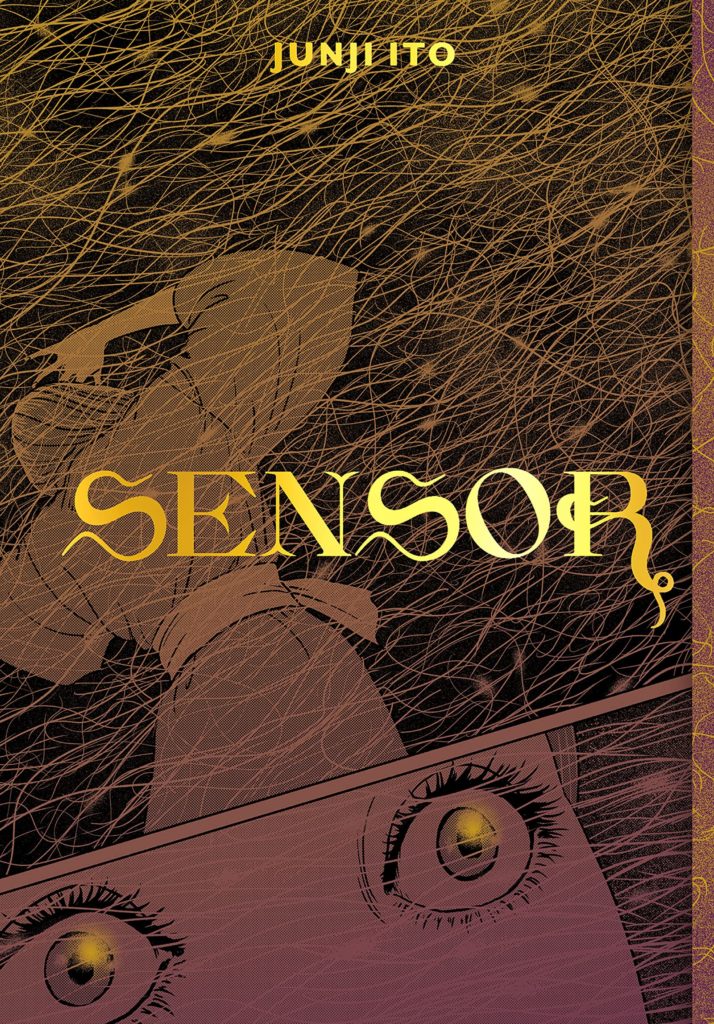
Sensor
By Junji Ito
Translated by Jocelyne Allen
Touch Up and Lettering by Eric Erbes
Published by VIZ Media (print and digital)
So Junji Ito probably doesn’t need much introduction, but it’s easiest to say he’s the most popular horror manga-ka. He’s best known for his series Uzumaki, about spirals that infect a town. His other works are numerous, and include Tomie, Gyo, Smashed, Shiver, Remina, and much more.
So I think it’s safe to say we dug this one, despite an uneven start. It was a fun read and reminded me that I just dig on Ito.
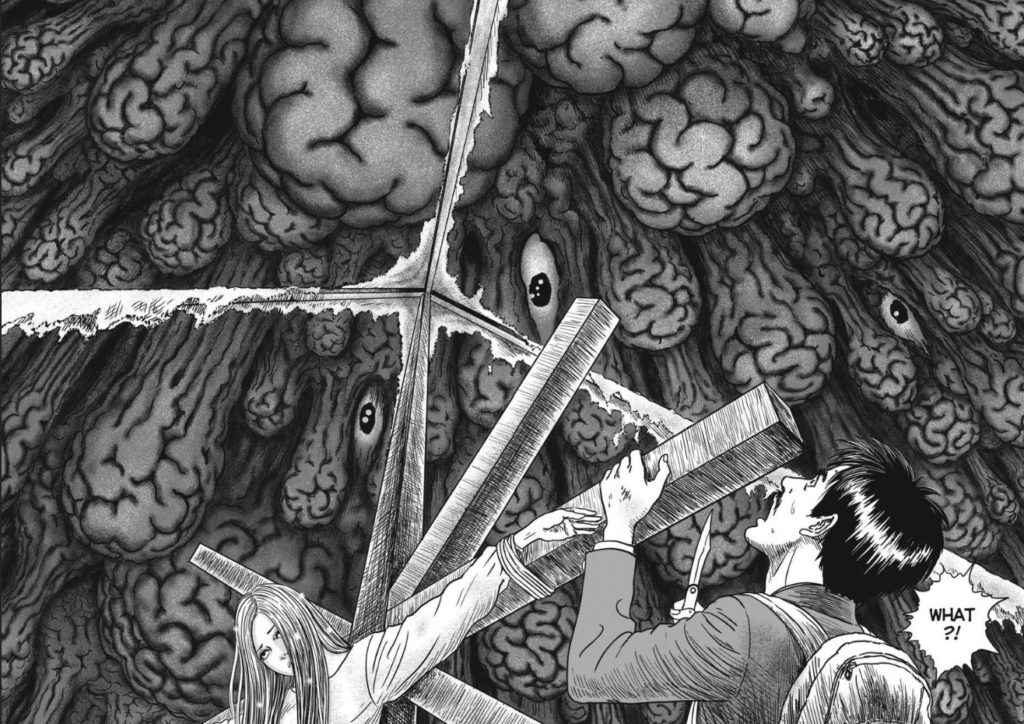
1:09:20 I make an off-handed comment about Christian missionaries being illegal at the point in the story in which they’re depicted. Just for some background, missionaries first entered Japan in 1542, but missionaries were banned in 1587, then Christianity on the whole was banned in 1597. The succeeding Tokugawa Shogunate hardened its stance even further with executions of Christians, and Christianity was more or less driven out of Japan by the 1630s. It started to return during the Meiji Restoration in the 1860s, but to this day, less than 1-2% of people in Japan consider themselves to be adherents of Christianity.
1:10:45 That Internet Cloud joke.
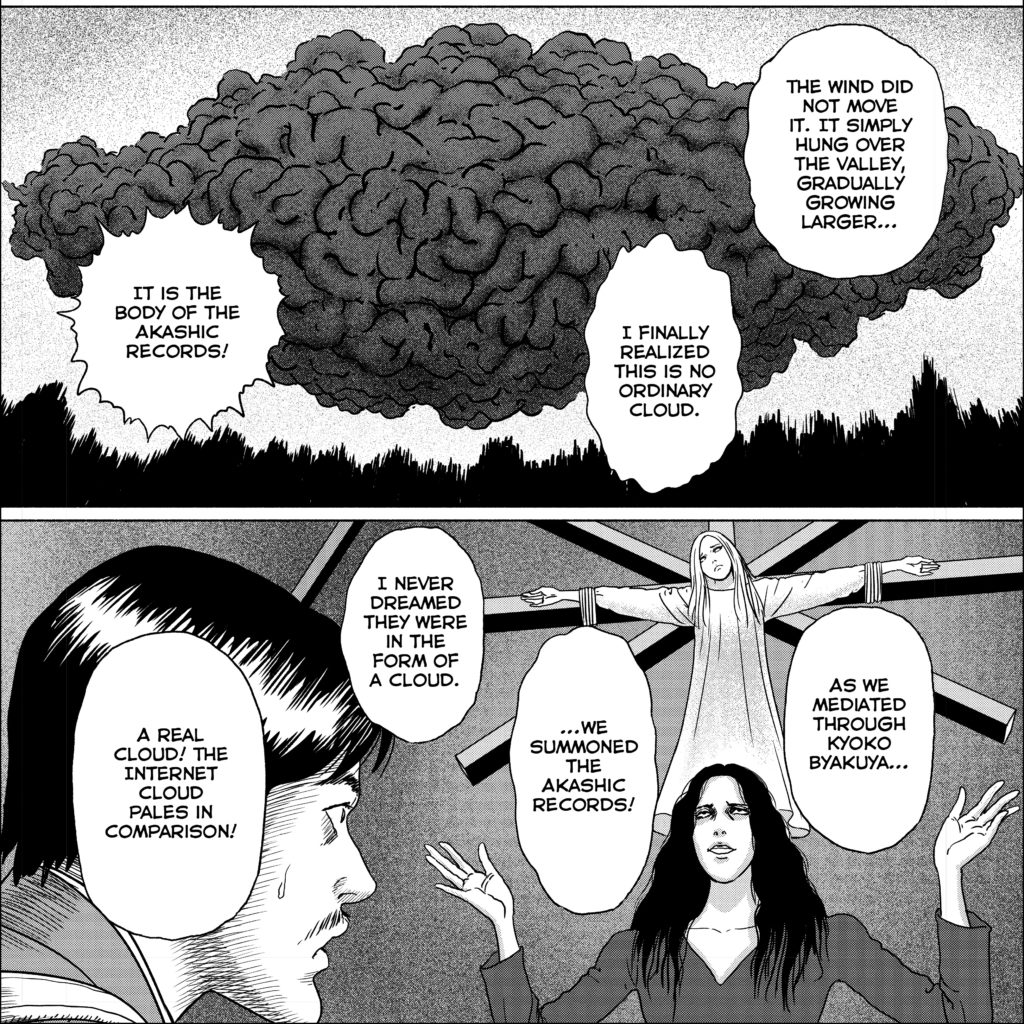
1:11:00 Yeah, a dude connects with the cosmos and it gets grosssssss…
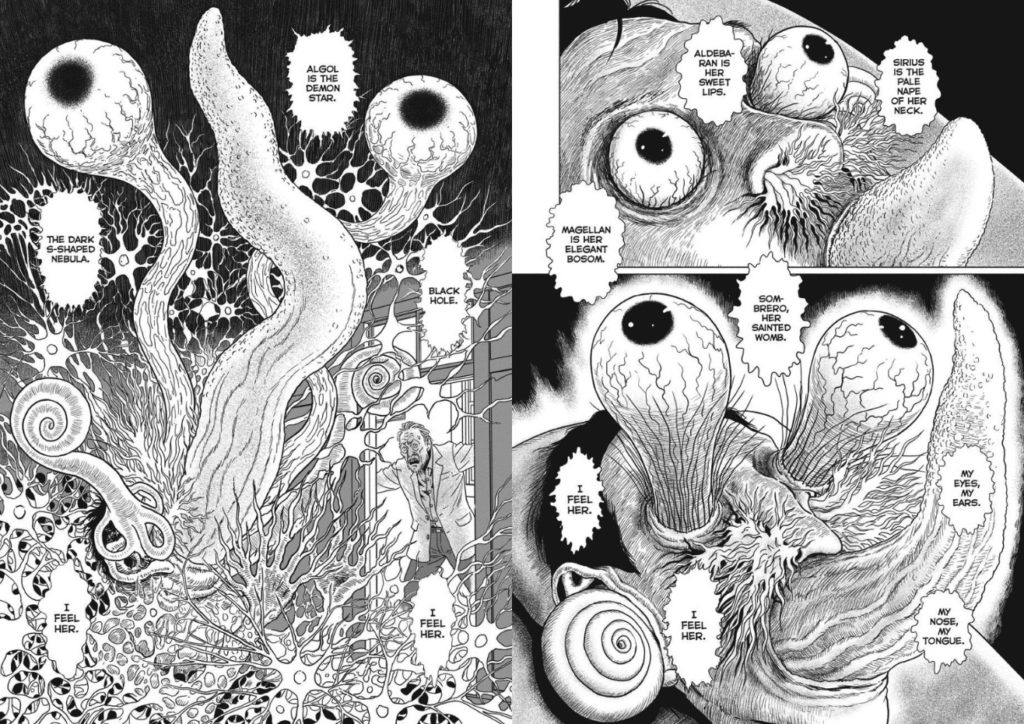
Thanks so much to VIZ Media for providing us with early access to Sensor, and for this sponsorship!
1:15:20 BREAK #2! Wow the time stamps are probably even worse after this point.
It’s time for the Question of the Week! But we kind of used up most of our submitted questions, and so we went back to this early topic that Deb decided to bring up back at the beginning of the podcast. It comes from a tweet from the folks at Otaku News.
“We’ve run out of storage space at Otaku News HQ. So it’s got us thinking. What criteria do you use for your collection when you need to have a cull? We don’t want to get rid of anything, but sadly we’ve run out of physical space! How to decide what meets the grade to keep?”
https://twitter.com/otaku_news
We talk a bunch here about the criteria we use to decide what to toss and what to keep, but ultimately, it kind of comes down to Marie Kondo’s “What Sparks Joy?” Heh.
BTW, did you know that there’s a Marie Kondo manga? It’s true! It’s by Marie Kondo and Yuko Uramoto. Man, we should probably read it one week. https://shop.konmari.com/products/the-life-changing-manga-of-tidying-up-a-magical-story
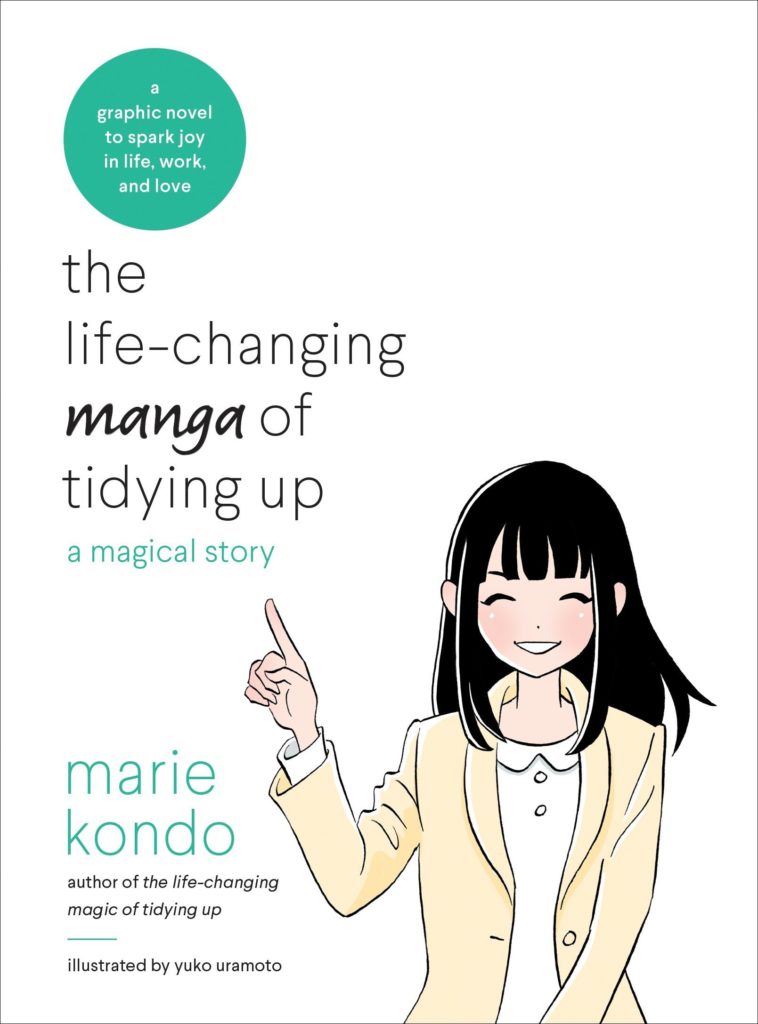
Speaking of Deb’s Twitter threads, here’s the link to her thread about the Out Of Print book you wish would come back into print:
And here’s Deb’s thread about your favourite ‘rare’ manga that it would be impossible to replace if you got rid of it:
1:17:45 Chip is referring to used manga retailer Mandarake (Mon-dah-rah-kay). It’s an overwhelming series of stores, deliberately so. The one in Osaka is called “Grand Chaos.” You can visit them online and be overwhelmed by the choice and selection at https://order.mandarake.co.jp/order/?lang=en
1:29:40 It’s time for this week’s Shout-Outs:
David shouts out his own excellent new book of short stories, Darker Than Blue: Go Back And Get It. You can buy it at https://davidbrothers.gumroad.com/l/gSRsyd. Go get it!
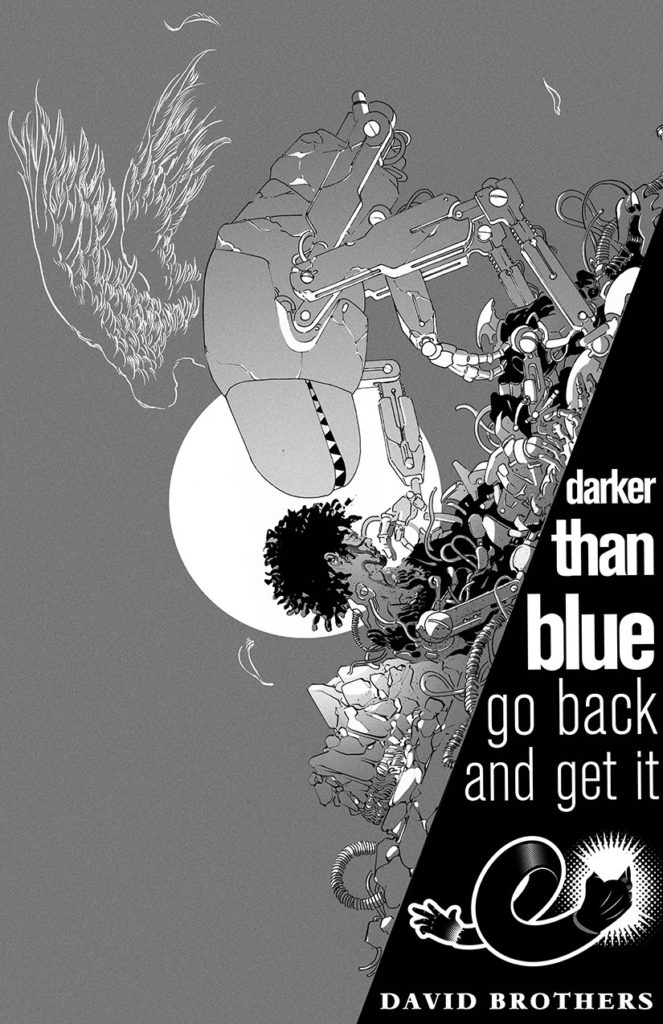
Deb Shouts Out Kageki Shoujo, a fun shojo series (with spin-off volumes) created by Kumiko Saiki and published by Seven Seas. https://sevenseasentertainment.com/series/kageki-shojo/ It’s about going to theatre school in Japan, essentially, and their lives, hardships, and successes. It deals with real life issues too. Sounds really good!
[Deb:] The anime is great too — it’s airing on Funimation: https://www.funimation.com/shows/kageki-shojo/
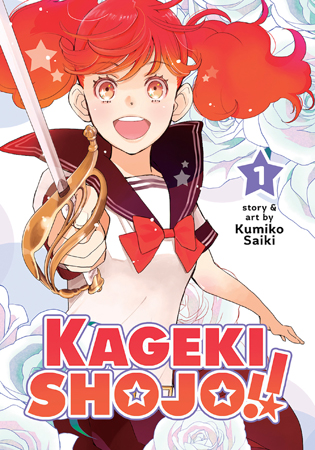
Deb also mentions two very cool, very “Mangasplaining” videos you can go watch!
First up, it’s the Best & Worst Manga of 2021 panel livestream! Check it out for great recommendations (and titles to avoid).
Secondly, check out Deb’s panel at Comic-Con, The Manga Publishing Industry Round Table! Get all the behind-the-scenes dirt on manga publishing from the publishers themselves.
Finally, Christopher’s shout-out is No.5., by Taiyo Matsumoto, published by VIZ Media and available now. https://www.viz.com/no-5
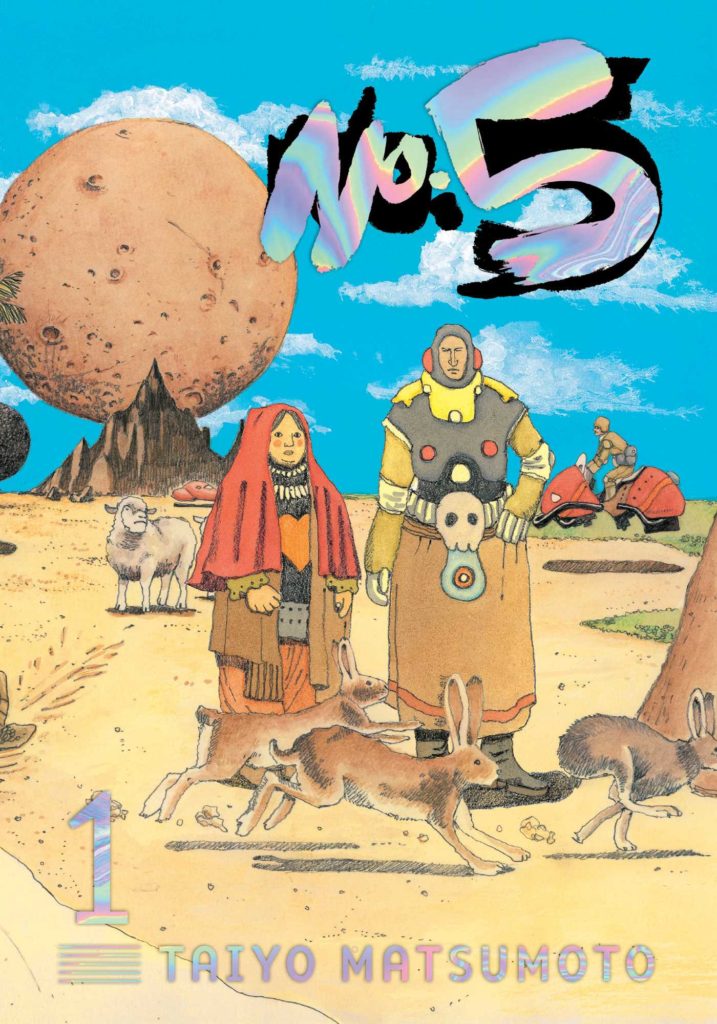
…and that’s this week’s episode of Mangasplaining!
Thanks so much for reading and for coming back to enjoy the new episode.
Find a comics and manga specialty retailer near you at Comicshoplocator.com.
And check out D.A.D.S. on Spotify, he made our cool theme music for us.
‘til next week!

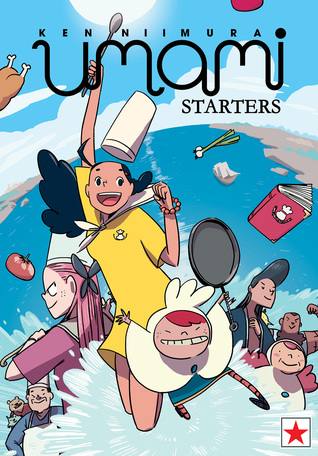
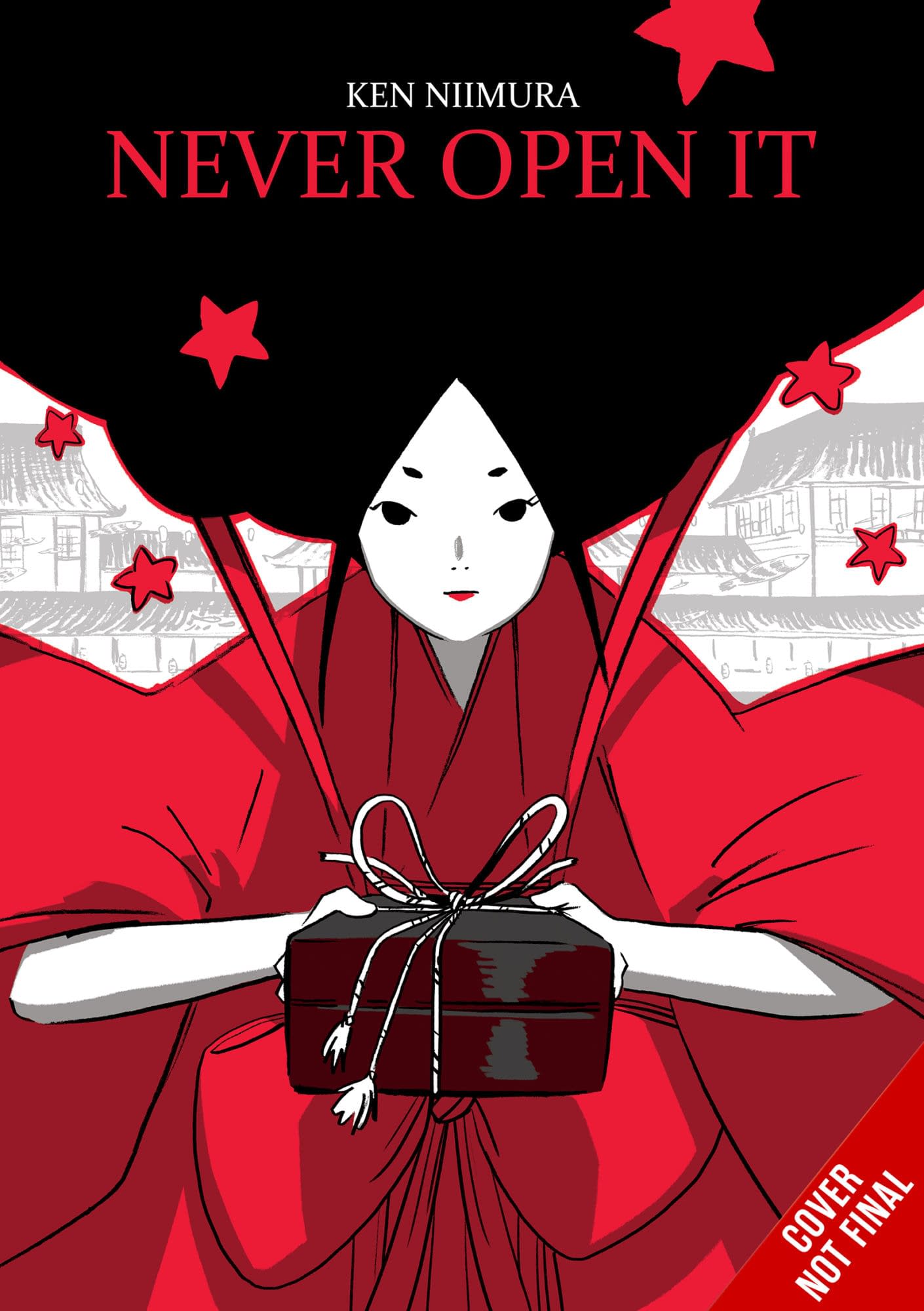
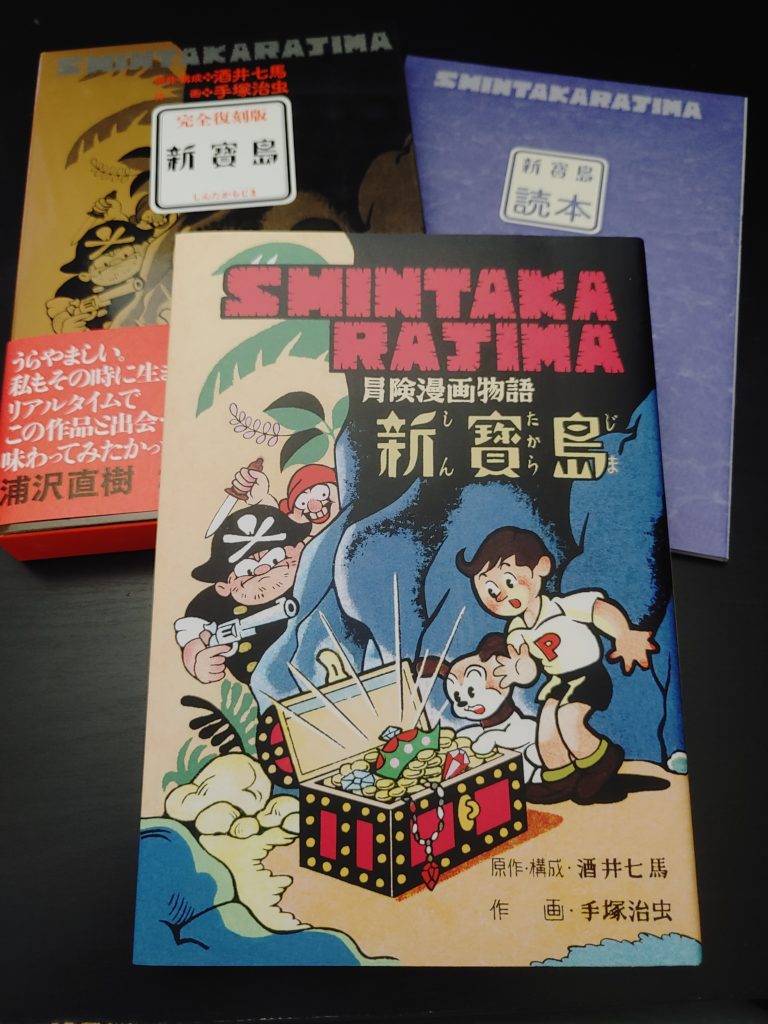
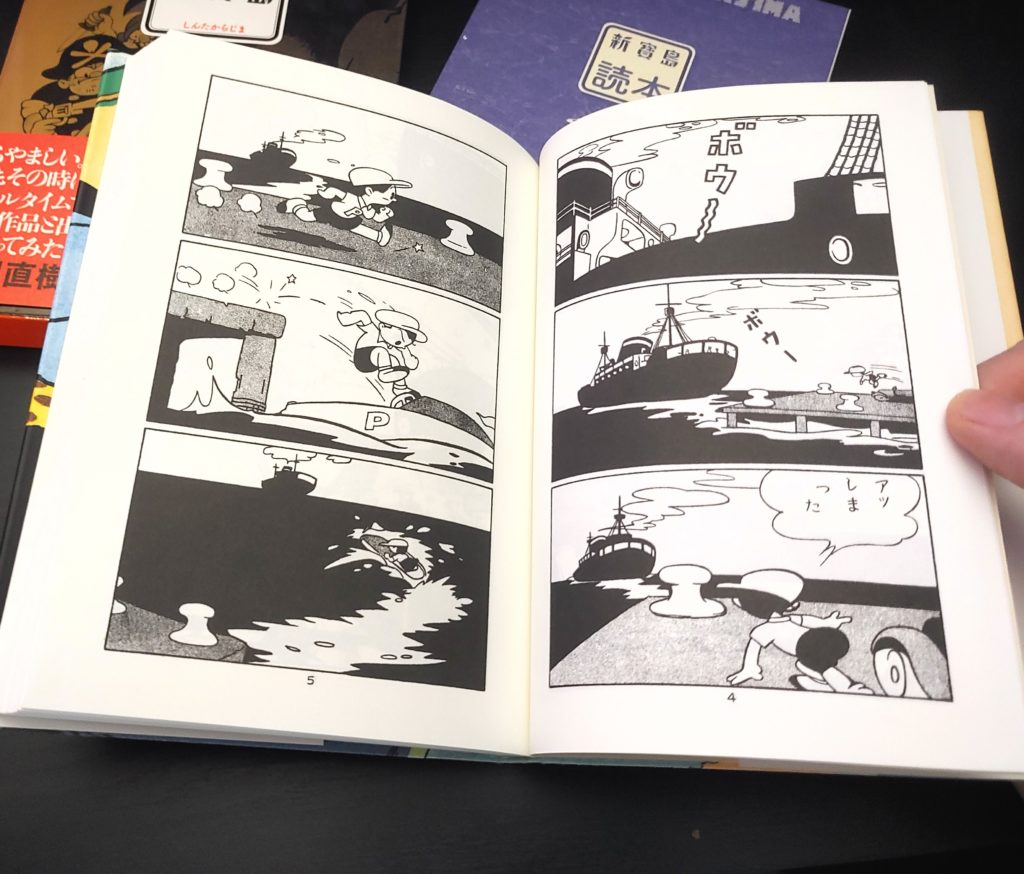
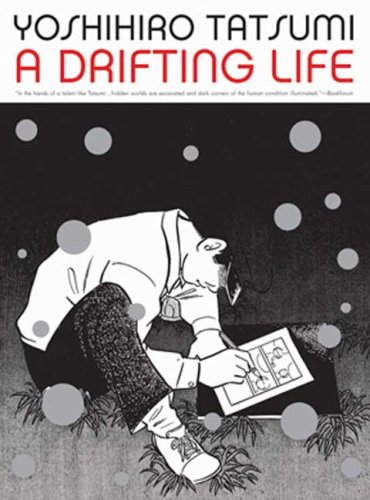


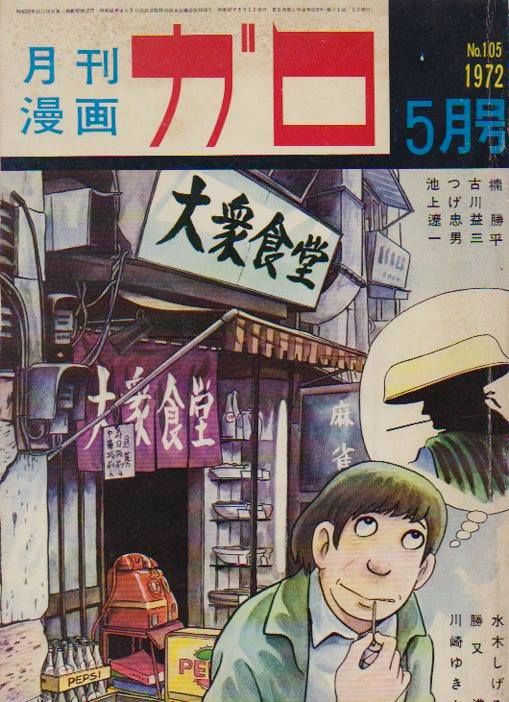
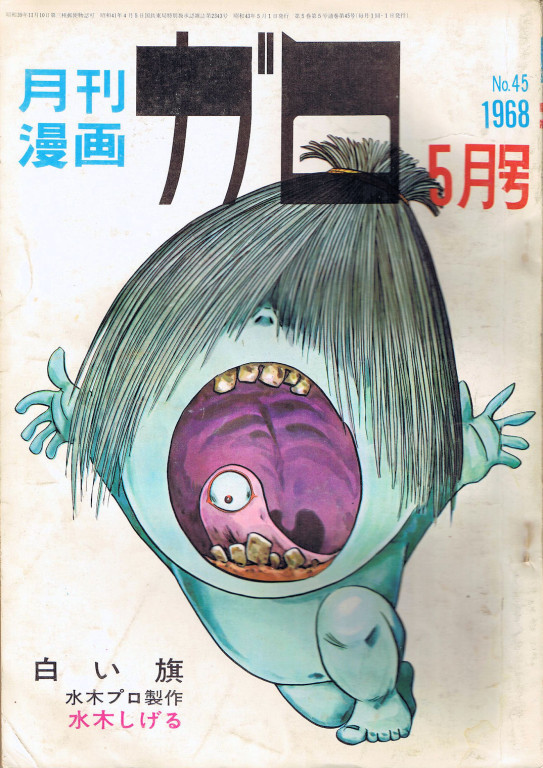
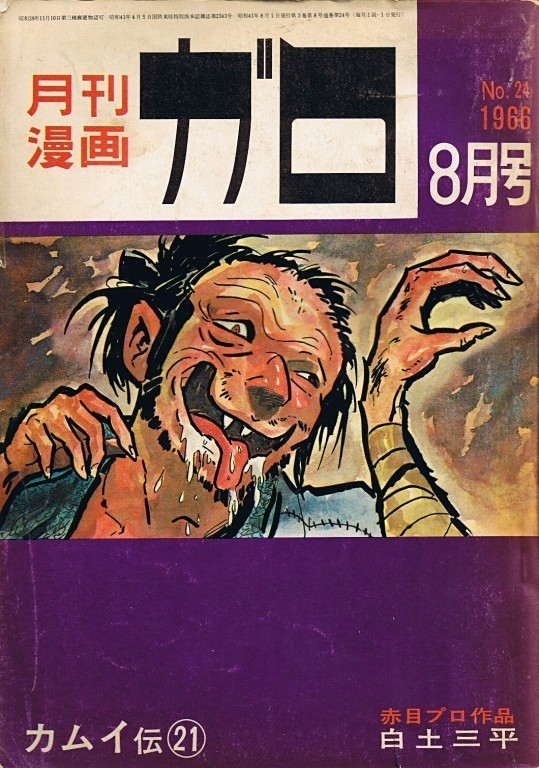

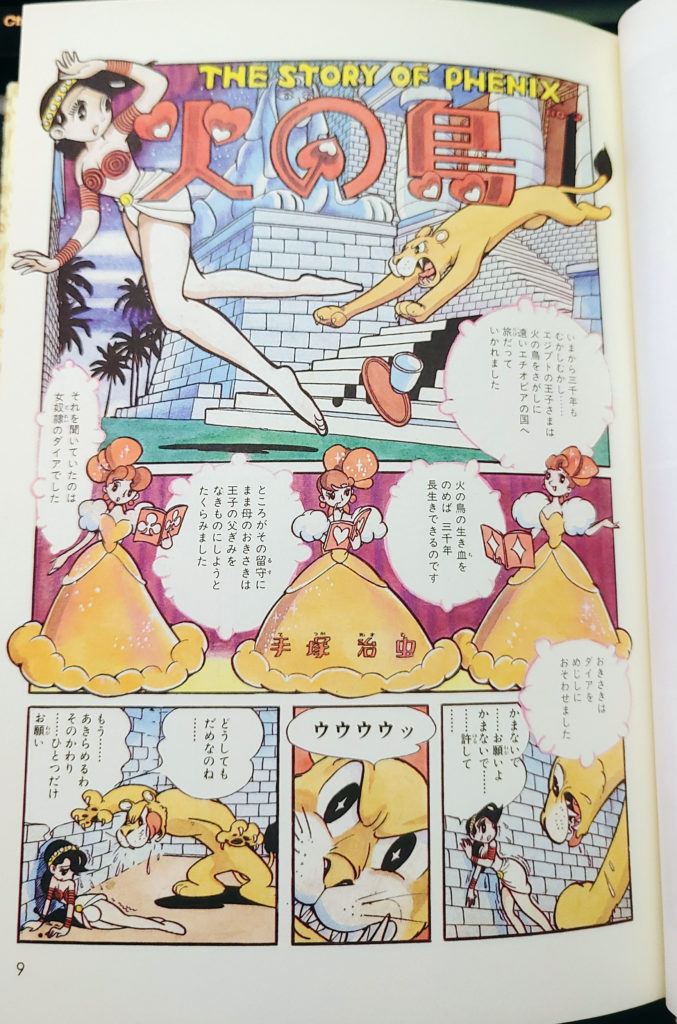
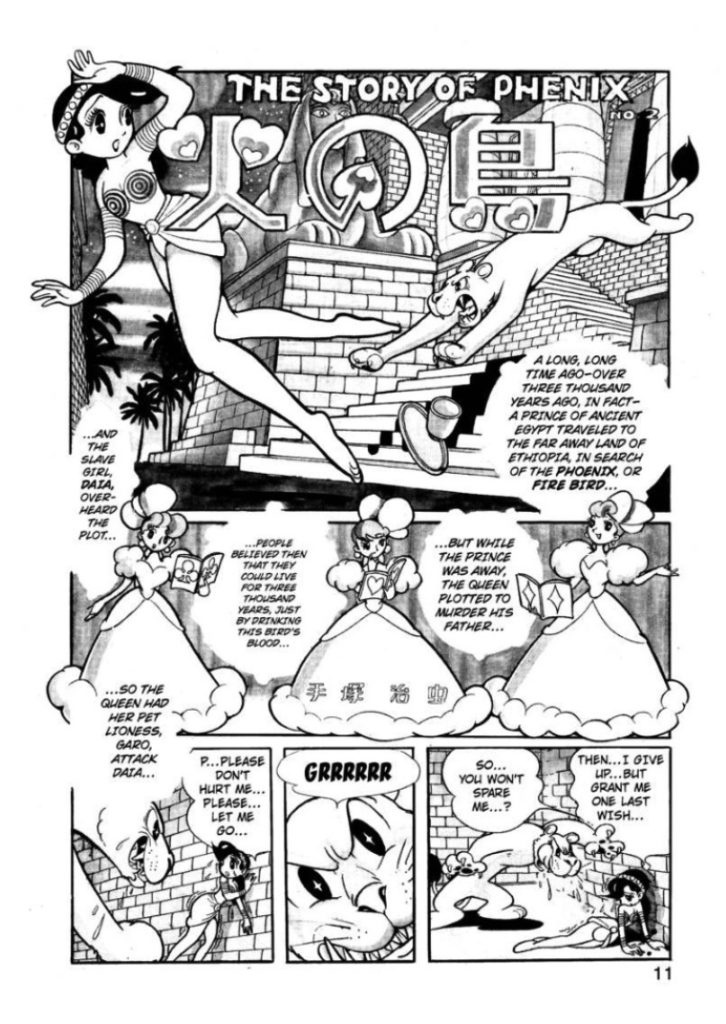
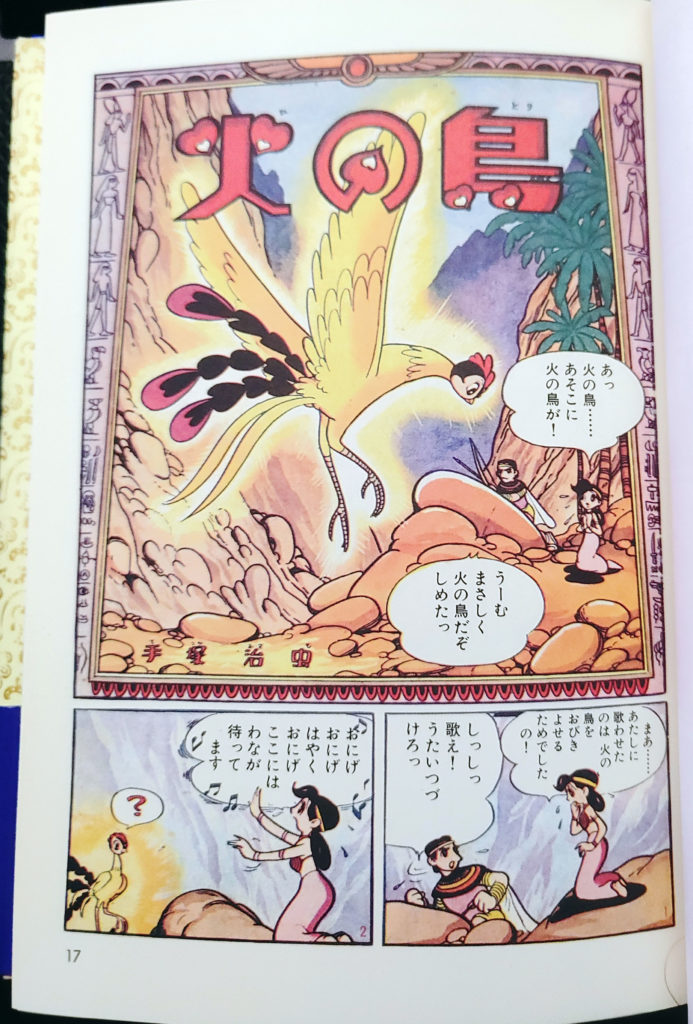
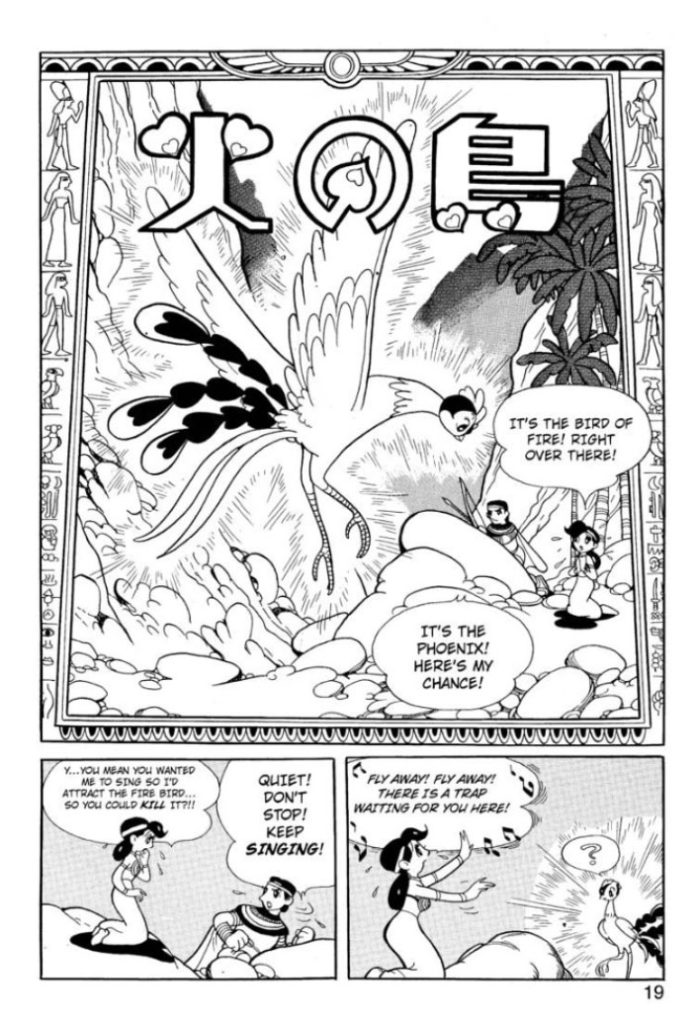
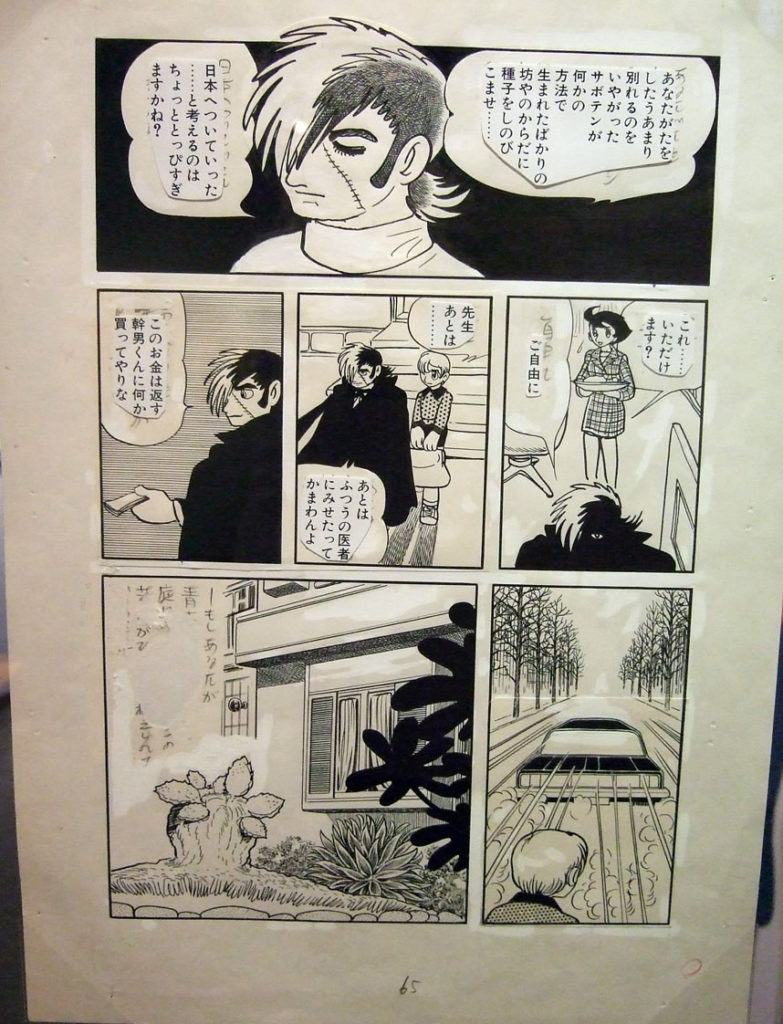
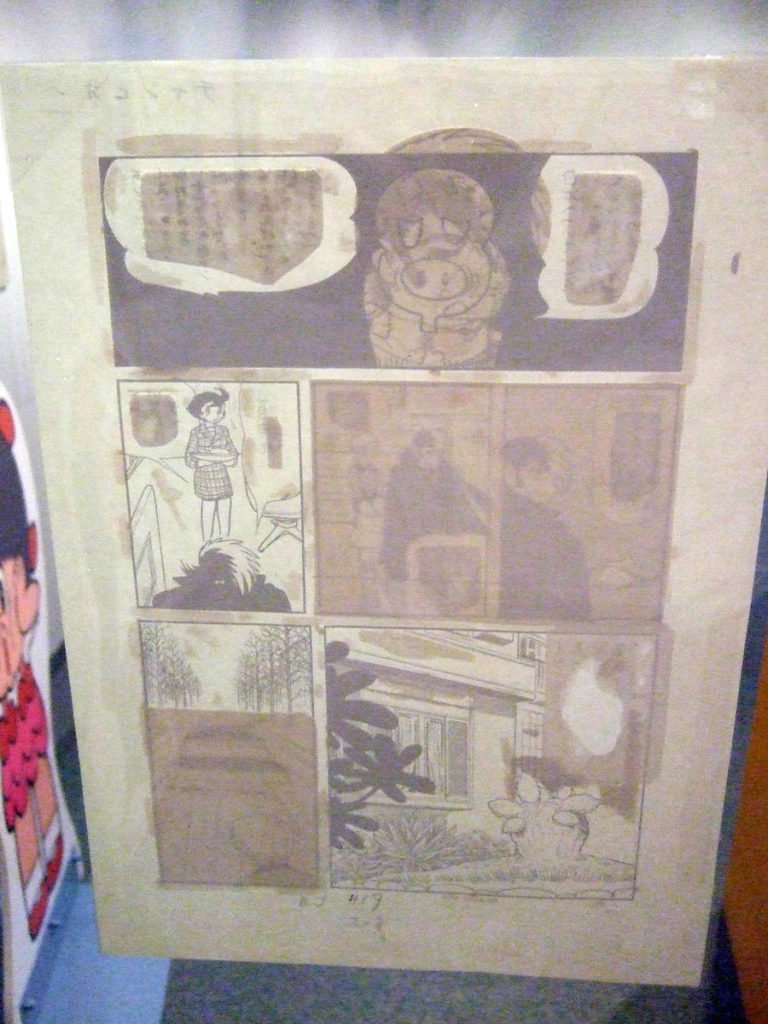
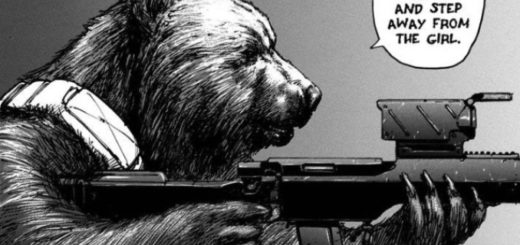
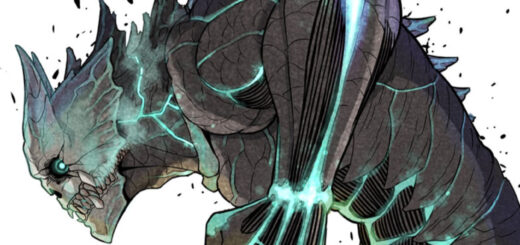

Terrific episode. I only own four volumes of Phoenix, but that includes these two (at the time I couldn’t afford to regularly buy manga, and so chose the volumes I most was interested in–but now of course wish I had them all).
One comment–about the fact that maybe Viz hasn’t reprinted because they’d have to do all the work all over again to put it out unflipped… I wonder if that is an issue in this case. Didn’t Tezuka’s rights holders originally demand his manga be published flipped ? I’m sure I’ve read that–and the old Vertical titles are all flipped. Kodansha is republishing a number of them this year (Ode to Kirihito being one) and I think they are keeping them flipped… (Interestingly, I recently came across a Keiko Takemiya interview from when Vetrical translated To Terra where she specifically mentions how they had published Tezuka manga flipped, but she insisted that her work be unflipped–although the interviewer complains about reading manga unflipped in English.)
QUite possibly it was a demand at the time, but subsequent releases began to release in the Japanese orientation at times, so it’d be possible to do an unflipped release I think…
Welcome back! What a great episode to kick off season two. I can’t believe you crammed both Tezuka and Junji Ito into one episode. Talking about flying close to the sun. Hope you can talk about these two gentlemen’s work again in a future episode, because you just scratched the surface.
I only read the first few volumes of Phoenix, but I think my experience was pretty similar. While I could appreciate the craft, the story didn’t hook me as much as I had hoped. I had seen images from the series before, but most of them were from the future-set volumes, so I was taken completely off guard by the first volume set in the past. “Future” definitely feels more like an art house comic in the vein Yuichi Yokoyama at times. I was not prepared, however, for the gap between Tezuka’s cartoonish figures and the philosophical tale he was attempting to weave. I think Tezuka can be an acquired taste, much in the same way Jack Kirby was before I learned to appreciate his style. Of course, I was still very much learning Japanese at the time, and so I also struggled with the language as well. I wasn’t excited by the volumes that delved back into the past, so that kind curtailed my interest at the time.
Some of the pages in “Future,” such as the ones you posted detailing the buildings, definitely feel like a direct influence on Katsuhiro Otomo’s work. Coming to Tezuka properly after sampling so many other manga creators really drives home how influential he was and remains to this day. I personally think his influence remains more overtly present in shojo manga, but I realize that’s a very subjective opinion.
I do plan on going back and finishing Phoenix someday. I originally purchased it in these little, reasonably priced digest sized volumes, about 3/4 the size of your average tankobon, and that did not do the art–or the font size–justice. I’d like to get those nice hardcovers someday, if the price is right.
Hi Miguel, thanks so much for the comment! The hardcover of volume 12 I grabbed from Mandarake was only 800 yen at the time. They may have shot up in value since then. 🙂 I think SPACE is probably the best one to read if you’re not sold on the series.
I like the question of the week segments. I enjoy those and talking about what you’ve been reading just as much as the main episode topic